ACADEMIC WORKERS PARTICIPATE IN UC-WIDE STRIKE FOR HIGHER WAGES, BETTER LABOR PRACTICES

Unions representing teaching assistants, student researchers, academic researchers and postdoctoral students authorized the strike began on Monday
 BY SYDNEY AMESTOY campus@theaggie.org
BY SYDNEY AMESTOY campus@theaggie.org
On Nov. 2, unions representing graduate students, teaching assistants, student researchers and postdoctoral scholars authorized a strike at all 10 UC campuses — the largest academic strike in the history of U.S. higher education. The strike officially began on Monday, with many academic workers ceasing to perform work duties related to teaching and research and instead joining picket lines across campuses to increase the visibility of the strike.
On the first day of the strike, picketers blocked the intersection of Hutchinson and La Rue Rd., and lined the entrance to campus on Howard Way holding a sign that read, “Strike Means Strike: Undergrad Solidarity.”
The unions, United Auto Workers (UAW) 2865, Student Researchers United (SRU-UAW) and UAW 5810, are asking for a significant pay increase from about $24,000 to $54,000, annually. This demand is in response to the rising cost of living throughout California, as 92% of graduate workers in the UC system are currently rentburdened, meaning that more than 30% of their salary goes toward rent each month.
Other demands include sustainable transit benefits, smaller class sizes, equity for international scholars, disability justice and childcare benefits for working parents.
As a result of the strike, there have also been disruptions to the Unitrans Memorial Union bus terminal, and according to the Unitrans website, these delays and temporary suspensions are expected to continue during picket line hours for the duration of the strike.
The UC Student Body Presidents released a joint statement in solidarity with UAW on Monday, signed by the student body presidents of UC Berkeley,
UC San Diego, UC Santa Barbara, UC Riverside, UC Merced, UC Los Angeles and UC Davis.
“We acknowledge that our academic experience as students may be impacted,” the letter reads. “However, we stand in full support of actions such as class cancellations, delayed grading, and the absence of feedback on work in order to stress the importance of our workers, researchers, postdocs, teaching assistants, and graders. [...] Our union colleagues’ working conditions are our learning conditions.”


Thirty-three members of the California Legislature also released a letter of support for academic workers,
urging the UC to bargain in good faith with UAW in order to support student workers and avoid further disruption to the education of UC students.
“Their talent, innovation, and labor contributes greatly to the University’s mission and its ability to secure funding,” the letter from the California Legislature states. “The UC is one of the top public university systems and research institutions in the world, in no small part because of its ability to attract the most talented scholars from a wide array of backgrounds. But the UC system cannot live up to its mission and reputation if its own employees do not feel respected.”
TWO VICTIMS HIT IN DRIVE-BY BB GUN SHOOTINGS
BY RACHEL GAUER campus@theaggie.org
On the evening of Oct. 30, two victims reported being hit with BB gun bullets during two separate drive-by incidents, according to an email crime alert from the UC Davis Police Department sent to community members during the early morning of Oct. 31.
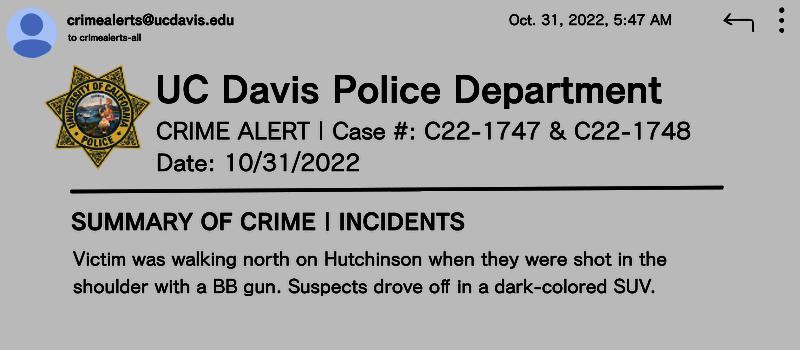
The crime alert, written by Sergeant Vincent Kwong, reported that two incidents occurred within a short time period just after 8:20 p.m. and that both victims described the suspected vehicle as a dark-colored SUV.
One of the victims, a first-year bioscience major who requested to be anonymous, described their experience and their actions immediately following the initial shot.
“I was in the bike lane and a car drove beside me and I suddenly felt a sting in my back,” the student said. “I didn’t really know what happened but I looked at the car that was passing me and I saw an airsoft gun hanging out of the window. I started yelling at them and I tried to chase them with my bike down the road but they sped off before I could catch their license plate and everything.”
Due to their quick response to the shot, the victim stated that they were able to offer information to the police regarding the specific type of gun and the model of the vehicle. The student

offered advice for others involved in a future incident of the same nature.
“For a lot of people, the initial shock of it can throw you off, and then you can miss really pertinent information,” the student said. “I think the best way to respond is to try to get as much information [about] the perpetrator as possible, like the color of the car, who the person is, the type of gun it was and especially the license plate.”
These incidents were the second on-campus BB gun crime that has been reported this quarter. On Sept. 27, victims were hit by an unknown suspect on the corner of La Rue Rd. and Orchard Rd., according to a crime alert that was sent out the following day. According to the report, no victims involved requested medical attention.
Earlier this year, on April 1, another drive-by incident of a similar nature occurred when a group of students gathered atop the parking garage on Hutchinson Drive for a club social event.
According to Cecelia Wong, a third-year biomedical engineering major who attended the event, a Jeep turned a corner at rapid speed and began shooting at the group of students with what looked like a BB gun, hitting multiple of them. Wong was one of those who was hit, and she described the incident.
“When I saw the car zooming around the corner, I actually thought they were going to [run into] us because they were going so fast,” Wong said. “We were all standing in a big group together and we couldn’t see anyone’s faces but we saw guns pointing out the window.”
Wong noted that the group later analyzed the bullets and determined the gun was likely not a BB gun but rather a water pellet gun due to the watery, gel substance of the pellets. Despite the relatively harmless nature
of the bullets, the event left the students shaken up.
“We didn’t really react because it was so fast, but everyone felt the shots of getting hit,” Wong said. “We were all in shock and didn’t really move. We all just stood there and then soon the car drove down the parking garage and sped off.”
Due to the rapid speed of driveby incidents, law enforcement officials explained that it is difficult for victims to quickly identify those involved in the shootings, and therefore, the police are not able to make prosecutions related to the incidents.

Doug Voska, the Patrol Lieutenant for the UC Davis Police Department, noted that one common theme of the events tends to be the areas surrounding Russell Boulevard, which he described as the dividing line between UC Davis and the city of Davis. However, according to Voska, the lack of information regarding the suspects’ identities and their motives makes the search for them difficult.
“I don’t know why [incidents like these] are happening,” Voska said. “I don’t know if it’s maybe something done by high school kids [as a prank], but we haven’t received a whole lot of information that we could consider actionable.”
Though there haven’t been any prosecutions so far, Voska highlighted the importance of being aware of one’s surroundings for the sake of personal safety and in order to retain information that could lead to a successful prosecution.
“It is unfortunate, but it seems to be that now we have to be aware of cars that are passing by,” Voska said. “But if people are on notice that this is happening, and they’re aware of their surroundings, then if something does happen, they can get a better description.”
According to UAW 2865, strike authorization votes in which union members decided whether or not to authorize a legal strike were held on UC campuses between Oct. 26 to Nov. 2. A total of 36,558 union members voted, with 98% agreeing to authorize a strike, according to the Fair UC Now website. These votes came after many meetings with UC administrations that failed to achieve the unions’ desired goals.
Representatives of the unions at UC Davis held a celebratory event on the night of the authorization vote results, during which they spoke about their demands on behalf of the student workers they represent.
“The negotiations leading up to [the strike authorization] have been repeatedly stalled or undermined by the University of California,” said Diana Sernas, who has been part of the negotiation process with UC Davis administration on behalf of UAW 2865. “We find the UAW has filed over 20 [reports of] unfair labor practices at the bargaining table.”
According to the Fair UC Now website, the unions’ demands have historically sought legal protection from bullying practices in the workplace. Negotiations about legal protection from bullying reached a tentative agreement in August according to Neal Sweeney, the president of UAW 5810, which represents UC postdoctoral students and academic researchers.
“[Bullying] is a big problem, particularly in research fields and in academia due to the power dynamics,” Sweeney said. “Usually the professor holds a lot of power over people’s lives and careers. The university had broken the law by refusing to bargain on this topic, which we felt [constituted] unfair labor practices.”
While negotiations for this demand were successful, other core demands have not been met. These include pay increases, childcare benefits, international scholar rights and transit incentives.
“One example of a sustainable transit incentive that the UC could provide would be a subsidy for purchasing a bike, because Davis is a very bike-friendly town, and it is very cumbersome to drive,” Sernas said. The strike authorization comes out of a collaboration between the three previously mentioned unions, which is historically notable according to Ximena Anleu-Gil, who is on the bargaining team for SRU-UAW.
SETTLEMENT MADE WITH CITY OF DAVIS WILL PROVIDE NEW OPPORTUNITIES FOR GIRLS IN SPORTS
Davis Youth Softball Association and civil rights nonprofits settle with the city of Davis over Fair Play Act violations
 BY MADELEINE YOUNG city@theaggie.org
BY MADELEINE YOUNG city@theaggie.org
On Oct. 27, the Davis Youth Softball Association (DYSA), backed by nonprofit groups Legal Aid at Work, Fair Play for Girls in Sports and the California Women Law Center, came to a settlement with the city of Davis. The settlement addressed ongoing allegations against the city for noncompliance with the Fair Play in Community Sports Act, which was passed nearly 20 years ago, and promised renovations and improvements to softball facilities across the city of Davis that have yet to be implemented.
The city will begin improving facilities and programs to promote fair play, equality and opportunities for girls in sports. The city will additionally manage funding, equipment, practice, coach compensation, publicity, qualified umpires, judges and game schedules, according to the settlement.
DYSA President Jennifer Martinez has voiced her concerns regarding the state of DYSA softball fields with the support of parents, players and nonprofits over the past year.
“We noted that there were some inequities between different sports organizations that are down and we wanted to have equity for girls,” Martinez said. “It’s not girls against
boys, it’s equity for the youth in the community.”
Despite the Fair Play Act being in place for almost two decades, the association, players and parents voiced concerns over the differences between the F Street softball field and the Davis Little League baseball fields.
“There’s no fences, no bathrooms, there’s no concessions standards, there’s no lights, there’s no place to sit for the girls, but right across the street, the boys have all of those things,” Martinez said. “And then as they grow up, they notice these things and they start asking questions.”
Legal Aid at Work was one of the nonprofits that contributed to the settlement. Elizabeth Kristen, the legal aid director and senior staff attorney of the Gender Equity and LGBT Rights Program for Legal Aid at Work, wrote a letter in Oct. 2020 addressing the violations of the Fair Play in Community Sports Act with support from other organizations.
“A lot of girls don’t have access to sports in their schools, maybe not until they get to high school, and club sports are really expensive and sometimes out of reach,” Kristen said. “And so having access to fair opportunities in community sports is really important.”
FOLLOW US ON SOCIAL MEDIA @THECALIFORNIAAGGIE @CALIFORNIAAGGIE @CALIFORNIAAGGIE THE CALIFORNIA AGGIE SERVING THE UC DAVIS CAMPUS AND COMMUNITY SINCE 1915 THEAGGIE.ORG VOLUME 144, ISSUE 9 | THURSDAY, NOVEMBER 17, 2022
The two consecutive incidents occurred on Oct. 30 and come as the second BB gun-related crime in Davis this quarter
STRIKEAUTHORIZATION on 8
READ MORE CLIMATE MODELS CAN MORE ACCURATELY SIMULATE ATMOSPHERIC CONDITIONS BY INCLUDING VAPOR BUOYANCY SEE PAGE 11 Researchers at UC Davis determine that the lightness of water vapor should not be excluded from climate mode.
FAIRPLAY on 8 JOANNE SUN / AGGIE
NATALIE CHENG / AGGIE
UC Davis academic workers strike for fair compensation. (Kayla Bruckman / Aggie)
YOLO COUNTY AND CITY OF DAVIS HOST VACCINE CLINICS TO PROTECT AGAINST FLU SEASON AND COVID VARIANTS
The Davis Senior Center hosts vaccine clinic for Davis residents to receive influenza and bivalent boosters
IN SUPPORT OF DAVIS TEACHERS ASSOCIATION AMID ONGOING CONTRACT NEGOTIATIONS
Residents gathered at the Davis Joint Unified School District meeting to demand better pay and benefits for teachers
BY JILLIAN MARCH city@theaggie.org
On Nov. 3, residents gathered in front of the entrance to Davis City hall during the Davis Joint Unified School District Board (DJUSD) Monthly Meeting in a show of support for the Davis Teachers Association (DTA) amid ongoing contract negotiations with the local school district.
“Davis students deserve the best!” cheered the crowd as DJUSD Superintendent Matt Best arrived at the most recent School Board Meeting. Parents, teachers, school site staff and students were in attendance to protest what they considered the school district’s unwillingness to negotiate in good faith with their teachers’ association.
During his initial presentation, Victor Lagunes, the DTA president and educator at Da Vinci Junior High, said that due to the district’s teacher shortage, remaining teachers have a shortened prep time period and increased difficulty obtaining substitute teachers. Negotiations have focused heavily on increasing the pay of schoolsite staff members, but so far, offers from the district have been disappointing.
sufficiently to cover the staffing needs and how that has impacted their ability to prep effectively for their classes, groups and interventions.”
In some cases, students have been left without a permanent teacher for the 2022-2023 school year. Christopher Fluetsch, a teacher and librarian at Willett Elementary, elaborated on this concern during public comment.
BY ANTHONY W. ZAMMIKIEL city@theaggie.org
On Nov. 8, the city of Davis and the Yolo County Health Department co-hosted a vaccine clinic at the Davis Senior Center. Residents at the center were able to receive the standard influenza vaccine and the latest bivalent booster to protect against the latest Omicron variant of COVID-19, free of charge.
On Oct. 25, the city of Davis announced the pop-up clinic on the City Hall page of their website. The announcement provided directions to the Davis Senior Center, located at 646 A St., and information about the vaccines that the clinic would be offering.

“The bivalent booster provides expanded protection against the SARSCoV-2 virus, including the currentlydominant Omicron variants,” the announcement read. “Everyone six years old and older who have already completed their primary COVID vaccine series is recommended to receive a single dose of a bivalent booster if at least 2 months has passed since their last dose of a COVID vaccine. Those who have had COVID-19 recently can come to the clinic once they have completed their isolation period.”
The announcement also said that this winter, there will likely be a significant level of influenza spread given the increase in COVID-19 cases, and recommends that everyone six months old and older receive the annual influenza vaccine to protect against the disease.
Barbara Archer, a representative of the Public Relations Office for the city of Davis, talked about the importance of the relationship that the city has with the county and said that they would be hosting more collaborative activities in the future, including another vaccine clinic.
“The city promotes county programs on city social media, and the city is always happy to open a city facility for these important programs,” Archer said. “There is another flu and COVID booster clinic at Emerson Junior High at 2121 Calaveras Avenue on Nov. 15 from 4:30 p.m. to 7 p.m.”
Directions to Ralph Waldo Emerson Junior High can be found on the school’s website. Archer reiterated that the city and the county want to distribute influenza and bivalent booster vaccine doses as soon as possible to ensure that the Davis community is protected going into the winter.
More information about each vaccine can be found on the Health and Human Services page of the Yolo County website. Additional information about immunizations can be found on the Immunization Program page, also located on the county website. Inquiries regarding public programs to support Yolo County residents can be addressed by calling the number (530) 666-8552 during its scheduled business hours, which are 8 a.m. to 5 p.m, Monday through Friday.
According to California School Employees Association (CSEA) President Sande Royval, over the course of the past few months, DJUSD has seen a large number of teachers and other essential faculty members leave the district for neighboring ones. She attributes this to DJUSD’s salaries and benefits, which she explained have not kept up with the city’s high cost of living.
“We are an important and essential part of the school community,” Royval said. “Unfortunately, we’re not feeling that way. Our families and our lives are being threatened by historic inflation and it seems like [DJUSD leaders] don’t care.”
JOANNE SUN / AGGIE
Attendees in support of DTA negotiations were especially concerned by the district’s recent proposed solution of one-time payments and bonuses for teachers instead of salary increases, which the DTA argues will begin to remedy the district’s main problem, teacher retention.
Before the floor was opened for public comments, Lagunes talked about the impact that teachers have on students.
“Our students deserve the best,” Lagunes said. “DJUSD must invest in students by investing in and attracting great educators.”
Lagunes said that DJUSD is unable to find and retain quality teachers and that this is a main concern during the negotiation process.
“I think about all the teachers that have taken on an extra FTE (full-time equivalent) than what they had planned on this year because we have not hired
“You have four elementary school classrooms here full of students who have been denied a full-year, long-term teacher for the entire year,” Fluetsch said.
Katelyn Moseanko, a special education teacher at North Davis Elementary, said during public comment that particular groups of students will face harsher educational deficits if DJUSD does not come to an agreement with DTA.
“Who will replace us?” Moseanko said. “Davis students deserve the best, and I am one of the best. We can’t afford to live here and when we compare salary and benefits not only now, but in 30some years when we retire, we can’t make the commitment to stay. And so what if we leave? Who will replace us?”

DTA negotiations are still developing. The next DJUSD Board Meeting will take place this upcoming Thursday, Nov 17 from 6-11 p.m. at Davis City Hall.
CITY OF DAVIS SUED BY FORMER CITY MAYOR AND HIS WIFE OVER NOISY PLAYGROUND EQUIPMENT
BY LA RISSA VASQUEZ city@theaggie.org
On Oct. 17, the
Former Mayor Krovoza and Janet Krovoza claim that the City of Davis failed to file an Environmental Impact Report (EIR) when the city council decided to relocate the playground equipment and is therefore in violation of the California Environmental Quality Act (CEQA).
The lawsuit, filed through the Superior Court of Yolo County on Oct. 5, became public when the city council released a statement addressing the suit on Oct. 25.
“The Davis City Council tonight, in its closed session discussion, unanimously voted to direct the City Attorney to defend the Krovoza v. City of Davis CEQA litigation,” read the statement.
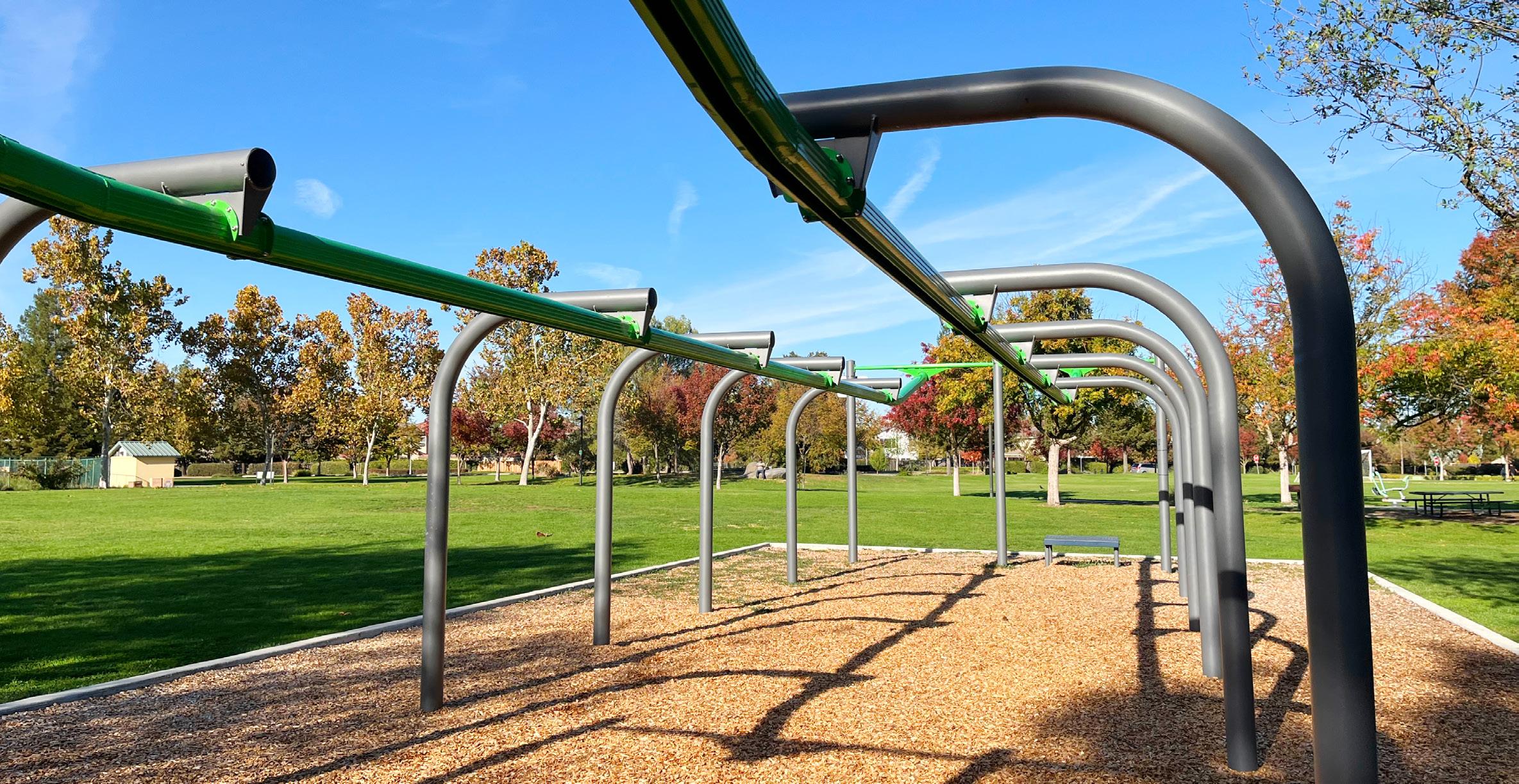
The Sky Track zipline first opened in May of 2019. Since its opening, no other individuals besides Joe and Janet Krovoza have submitted a formal noise complaint.
In response to the complaint, the city council retained Acoustics Group, Inc. (AGI) to conduct a noise study. AGI’s report was submitted to the city council for review on March 1, 2022. According to the study, the playground equipment was not compliant with noise ordinance levels.
“Based on the measurement data from NM1, the existing noise from Sky Track operations slightly exceeds the City’s Daytime Noise Standard of 55 dBA,” read the statement.
AGI referenced a noise source and decibel (dBA) level comparison chart. According to their report, 50-
“If
Regardless
According
Still
proceeded
Khalsa said in the Oct. 25 statement, “The City’s action to relocate the Sky Track was consistent with the law. I am confident that the City will prevail in this lawsuit.”
2 | THURSDAY, NOVEMBER 17, 2022 THE CALIFORNIA AGGIE
Former Mayor Krovoza and his wife sue the city over Arroyo Park Sky Track equipment
City of Davis was served a petition for writ of mandate by former city mayor Joe Krovoza and his wife over the relocation of the Arroyo Park Sky Track playground zipline.
RALLIES
DAVIS COMMUNITY
60 decibels is the sound equivalent of a quiet office to a normal conversation on the phone; a vacuum cleaner operates at 70 decibels.
The report was discussed in an Aug. 30 city council meeting. Unhappy with the findings of the report, Janet Krovoza stated at the meeting, “Sky track is a nuisance. Regardless of what is shown on meter, noise is penetrating house. Caustic, mechanical, banging sound. Violates noise ordinance. Health impacts. Should move to location that
does not impact neighbors.”
City Attorney Inder Khalsa also commented on the AGI report during the meeting.
noise ordinance is set at such a low decibel level that it precludes everyday activities and especially free speech activity, it is not constitutional,” Khalsa said.
of the decibel difference, on Aug. 30, the city council unanimously approved the relocation of the Sky Track facility in Arroyo Park to
a new location within Arroyo Park based on CEQA exemptions encompassing Class 1, existing facilities, and Class 3, new construction or conversion of small structures.
to the Oct. 25 statement, relocating the equipment with these exemptions does not require the city to file an EIR under state law, saving the city up to hundreds of thousands of dollars.
unsatisfied with the city council’s response, the Krovozas have
with legal action. They argue that the city improperly used CEQA exemptions to avoid filing an EIR and are suing the city to rescind their Aug. 30 decision, stalling construction and building efforts to keep the popular playground equipment open to the public.
Former Davis Mayor sues city over zip line playground equipment at Arroyo Park. (Isabella Smithsuvan / Aggie)
Senior Center in Davis is hosting vaccine clinics on A street. (Aggie File)
PHOTOGRAPH FEATURED IN NEW YORK CITY’S MUSEUM OF MODERN ART
BY ANVI KALUCHA features@theaggie.org
Imagine walking through the Museum of Modern Art in New York City when you see a familiar name on a picture titled “Vanna Brown, Azteca Style.” The black-and-white photograph features an Aztec woman in a traditional headdress, framed by a vintage animated television border.
This artwork was created by UC Davis Native American Studies professor Hulleah J. Tsinhnahjinnie, who has been photographing and reinventing Native American portraits for many years. “Vanna Brown, Azteca Style” was part of the installation “Our Selves: Photographs by Women Artists from Helen Kornblum” from April 16 to Oct. 10 and can now be viewed online on the MoMA’s website.
Tsinhnahjinnie has been involved in the creative arts since she was a child; her father and his friends were artists, exposing her to painting and photography early on. She created her first pieces very young under the guidance of her father and has continued since.
Tsinhnahjinnie said she has been at the forefront of documenting many pinnacle moments for the Native American community in California, notably the removal of the Pioneer Monument in the Civic Center in San Francisco. The statue depicted a colonizer and missionary standing over a nearly naked Native American man, serving as a graphic reminder of the years of abuse Indigenous people have faced in California.
“Once the statue was removed, on
the plinth that it stood, community members from the San Francisco Native community posed, and I took portraits of them,” Tsinhnahjinnie said. “It was a reclamation of space and having something really racist finally taken away.”
EXECUTIVE OFFICE, LIBRARY COMMITTEE AND ETHNIC CULTURAL AFFAIRS COMMISSION POSITIONS CONFIRMED BY SENATE
BY LEV FARRIS GOLDENBERG campus@theaggie.org
On Thursday, Nov. 10, ASUCD
Vice President JT Eden called the Senate meeting to order at 6:12 p.m., read the UC Davis Land Acknowledgement and called roll.
As the first agenda item, the Senate confirmed four nominees for ASUCD committees and commissions.
Third-year managerial economics major Allyson Francisco was confirmed as Vice Controller in the executive office.
The Senate then confirmed Nicky Fondale, a second-year political science and managerial economics double major, as Library Committee Chair.
Next, two students were confirmed as members of the Ethnic and Cultural Affairs Commission (ECAC). The students have requested that their full names not be included in this article in order to protect their safety. However, the students did share their last names.
Commissioner Chhem, an art history major, said that they have an interest in cultivating community to help mitigate mental health issues, and Commissioner Gaysinsky, an international relations major, said that they hope to ensure the Jewish community is represented on campus.
The Senate then heard a presentation from Robb Davis, the assistant director for student expression at the Center for Student Involvement.
Davis, the former mayor of the city of Davis, discussed hate speech on campus and fielded questions from senators about the university’s methods
and response to the Oct. 25 Turning Point USA event and the subsequent clash between protesters and counterprotesters.
“I’m going to be really careful with my words,” Davis said. “I’m not asking you to shut those events down. I don’t think that’s right. Opposing, speaking against, creating alternatives, this is what I’m hoping students and student groups will do. And that never seems like enough when you come up against hate. But it’s what we can do and what we should do.”
The Senate then shifted to quarterly reports, starting with a presentation from the Disability Rights Advocacy Committee. Chairperson Ryan Manriquez, a fifth-year political science and communications double major, listed recent committee accomplishments, including offering accommodations at Sunset Fest for the first time. According to Manriquez, these accommodations included having an American Sign Language interpreter on stage and offering noisereducing headphones, KN95 masks and refreshments.
Third-year political science major and Chair of the Academic Affairs Commission (AAC) Megan Chung followed with the AAC’s quarterly report.
Chung said the commission’s primary focus is working toward a Pass/ No Pass deadline extension. They have released a survey for students in order to gather information about when students believe the deadline should be moved to.
After Chung’s report, fourth-year English and history double major Isabella Chuecos, this year’s Creative
Director for ASUCD Creative Media, gave her team’s quarterly report.
The Senate then moved into public comments, during which they discussed the Union of Academic Workers strike.
“Solidarity forever,” Senator Stephen Fujimoto said.
Moving on, fourth-year environmental science major Mackenzie Field, the chair of the Environmental Planning and Policy Commission, gave her organization’s ex-officio report, and Chung followed with an ex-officio report from the AAC.
The Senate then returned to hearing quarterly reports and heard from fourthyear political science major Logan Ueno, the Transfer Student Representative (TSR).
Ueno said he is working on building the TSR office’s presence and visibility on campus to better represent transfer students on campus.
After Ueno’s presentation, fourthyear economics major Derek Neyer, the co-chair of the Executive Advisory Council (EAC), gave the EAC’s quarterly report.
Following a break, the Senate moved into consideration of old legislation and reviewed SB #33, which amends the Section on Special Committees of the ASUCD Bylaws to restructure the elections administration apparatus. SB #33 was amended to adjust the membership of the newly-established Elections Reform Task Force and tabled for a future meeting.

The Senate then approved past meeting minutes, and Eden adjourned the meeting at 10:45 p.m.

“I was at Indigenous People’s Day in LA,” Johnson said, “and I started talking to this person, and he was like, ‘Oh, you’re a Ph.D. student at UC Davis?’ And I said, ‘Yeah.’ And he goes, ‘Oh, you work with the most famous, wonderful Hulleah Tsinhnahjinnie.’ And I said, ‘Yeah.’ And then he was like, ‘Oh, my god, they’re amazing.’ And he was from France. So it was like, people in France knew of her work.”
Johnson has known Tsinhnahjinnie since she took her Visual Sovereignty class last fall, where Johnson was exposed to a new perspective on the subject due to Tsinhnahjinnie’s teaching style. Tsinhnahjinnie’s patience inspired Johnson to continue learning more, and they have worked together for over a year.
“Because I’m an older student, I didn’t really have these types of images or these people that I knew that looked like me that were able to do such impactful work,” Johnson said. “And, so now that I’m a graduate student, I don’t care how old I am, but it’s impactful. It’s like, she could do it, I could do it, and I love sharing who she is with my family and my community.”
Tsinhnahjinnie brought her passion for art to UC Davis and has continued to spread it with thousands of students. She is the current director for the C. N. Gorman Museum located in Hart Hall, which is currently closed for renovation. Michelle Villegas-Frazier, the director of the Native American Academic Student Success Center (or Native Nest), said that Tsinhnahjinnie’s work is uplifting Indigenous communities in Davis.
HULLEAH on 8
FRIENDS OF THE UC DAVIS ARBORETUM AND PUBLIC GARDEN CONCLUDE FALL PLANT SALES
 BY LILY FREEMAN campus@theaggie.org
BY LILY FREEMAN campus@theaggie.org
After welcoming the public back to the UC Davis Arboretum Teaching Nursery for the first time in three years due to the COVID-19 hiatus this fall, the Friends of the UC Davis Arboretum and Public Garden completed their final plant sale of the fall 2022 season on Nov. 5. These large-scale sales took place several times this season, according to their website, and involved dozens of students, volunteers and nursery staff, who grew and propagated some of the plants themselves on-site at the Arboretum.
The concluding sale offered many varieties of low-water, easy-care plants, according to the Arboretum website. Also present at the sale were staff members willing to share their knowledge about growing plants.
Enola Lagrave, a third-year environmental science and management major and a staff member on the Arboretum Nursery Management team, detailed her involvement in preparing for the plant sales.
“While sometimes we get the plants from different local distributors, we also have patches of plants around the Arboretum that we take pieces from,” Lagrave said. “[We] put them in tiny little pots, and once they’re grown a little bit, we’ll put them in bigger pots, and eventually, they’ll go on the sales floor.
We do a lot of our own cuttings [and] other times, we take care of watering, pruning or making sure they look nice and healthy.”
The sale also partnered with other local plant shops and organizations that had information to share about growing plants. Dispersed throughout the nursery, community members stood alongside tables showcasing their diverse plants and infographics about growing techniques and environmentalism.
Lawrence Groves, the founder of The Growing Groves, a newly-opened plant shop in downtown Davis, described his experience collaborating with the Friends of the UC Davis Arboretum and Public Garden for the first time this fall.
“I was kind of gagged when we were reached out to by the Arboretum,” Groves said. “It was very much like a moment of ‘Oh my gosh, these people know who we are.’ Being able to meet the directors and everyone who makes this possible has been a really present and amazing experience. It’s been really amazing feeling like a kind of staple in the community.”
Groves said that he hopes to come back to the next plant sale season and “have new things to show everyone.”
Amelia Swanson, a second-year
THE CALIFORNIA AGGIE THURSDAY, NOVEMBER 17, 2022 | 3
UC Davis’ Professor Hulleah J. Tsinhnahjinnie’s artwork in the MoMA, at UC Davis and at the C. N. Gorman Museum fosters Native American representation in art and academia
NATIVE AMERICAN UC DAVIS PROFESSOR’S
“Megasale” from Double Vision, 2010, digital photograph printed on poly-satin fabric, Hulleah J. Tsinhnahjinnie. (Hulleah J. Tsinhnahjinnie / Courtesy)
Former Mayor of Davis Robb Davis presented to the Senate about free speech on campus
CHRISTINA LIU / AGGIE
The seasonal sales offer plants grown both at the Arboretum and in local plant shops while acting as a hub for plant-growing experts to share advice with community members
design major who attended the plant sale, described her experience as a firsttime customer.
ARBORETUMSALE on 8
The UC Davis Arboretum and Public Garden hosts plant sale fundraisers to support the future of the garden, community events, and environmental leadership programs. (Christine Minarik / Aggie)
Tsinhnahjinnie has also worked with many women in the Indigenous community, including her photography in her collection of posters “Women of Hope,” which features influential Native American women leaders including poet Joy Harjo and surgeon Dr. Lori Arviso
Alvord.
Tsinhnahjinnie’s work has spread far beyond the Davis community to inspire many individuals around the world, according to Kimberly Johnson, a Ph.D. student in the Department of Native American Studies.
OPINION
WHY YOU SHOULD CARE ABOUT THE JAMES WEBB SPACE TELESCOPE
Meet the amazing telescope that took 30 years to build, and learn about the international collaboration and new discoveries it has made possible
BY EMILIE BROWN emrbrown@ucdavis.edu
It’s been almost a year since the James Webb Space Telescope (JWST) was launched, and already it has transcended our greatest expectations, inspiring new generations of scientists and bringing us closer to finding answers to some of the universe’s biggest questions.
The JWST gracefully aligns 18 gold-plated mirrors in interconnected hexagonal shapes and four instruments, all suspended on a silver sun shield to bring us the clearest pictures of the universe ever captured. It’s elegant, streamlined and simply beautiful.
Even more impressive than the graceful design of the JWST is what it took to make it a reality. Creating it required around 30 years of planning, testing and building in collaboration with thousands of engineers, physicists, mathematicians and technicians across 29 U.S. states and 14 countries. Multinational collaborations in science are almost always beneficial, but the successful creation of the JWST is nothing short of remarkable. It was designed so perfectly that, following a very successful launch last December, its expected mission life was doubled.
When you look up into the sky at night, you are looking at light that has already left galaxies and stars thousands, millions or even billions of years ago, so you are essentially looking into the past. The JWST allows us to see farther into spacetime than ever before. Its mirrors and infrared capabilities mean that its best images can capture objects over 100 times dimmer than the next best space telescope, the Hubble Space Telescope. In addition, its instrument’s data is not distorted when looking through dust clouds, meaning we can use it to watch the birth of galaxies.
The scientific possibilities with an instrument as powerful as this one are endless. Already, scientists have been
able to use data from the telescope to investigate some of the most pressing issues in astronomy and physics today.
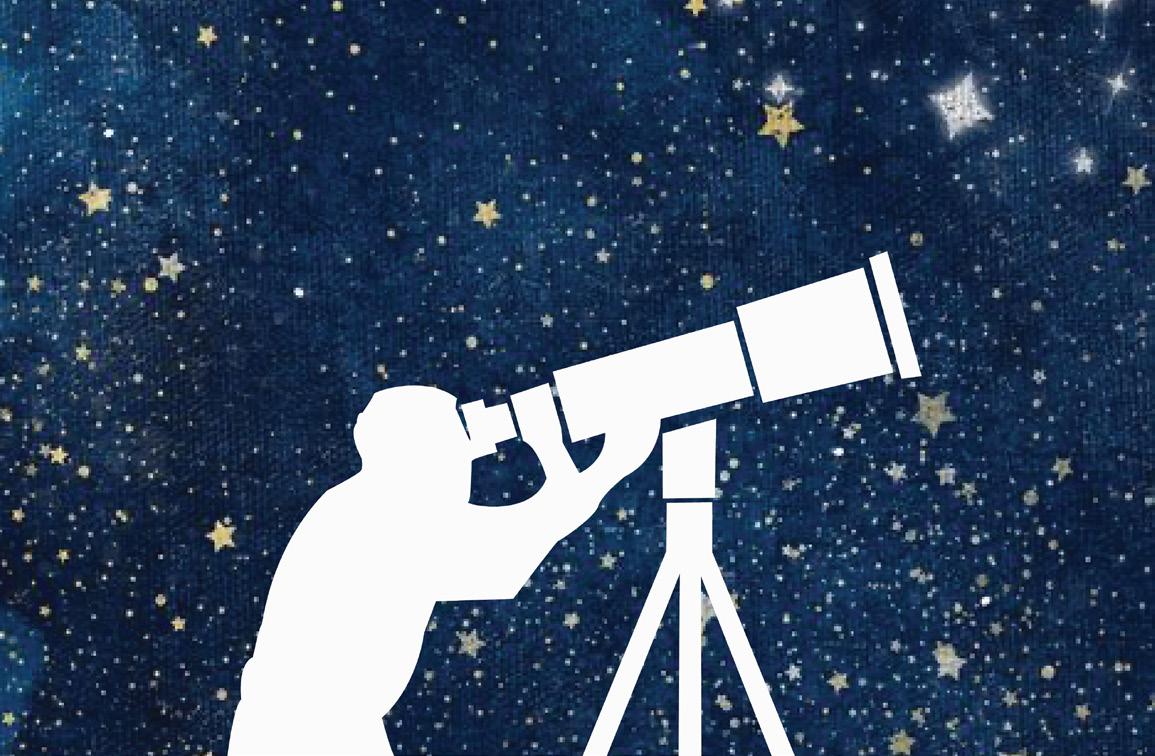
From the JWST’s first image alone, scientists have been able to study gravitational lensing effects and dark matter.
I believe to appreciate being alive on earth, and the rarity and beauty of existence, we must appreciate our universe and how it came to be. The JWST can help us learn more about the creation of our universe and its growth over time, shedding light on our place in the universe as well.
Just as the Hubble Space Telescope inspired the last generation of spaceloving scientists, the JWST is inspiring a whole new generation to look to the stars. If you haven’t seen the JWST Deep Field or any other JWST images, I highly suggest you look it up. Put simply, they are mesmerizing. Hubble’s images of galaxies thousands of lightyears away instill wonder in schoolchildren and high school students alike. The JWST will create more awe-inspiring images and scientific knowledge, carrying on Hubble’s legacy.
It took roughly $10 billion to build the JWST. I wouldn’t be surprised if you doubted the usefulness of the
new telescope, or if you think that the resources and brain power spent on the JWST would have been more beneficial on Earth. However, less than a year after launch, the JWST is already providing humanity with the clearest, deepest, widest and most complete images of the universe yet. It has proven what great work can happen when scientists collaborate, it has inspired the future scientists we will someday rely on and it has helped us learn and theorize about how we came to be.
Not only that, but by letting us look more closely at other planets and star systems, we can use the JWST to make technological advances and learn more about our own planet. It is one of the greatest assets to civilization as we know it, and the future beneficial applications of the JWST are unlimited.
If you would like to learn more about the JWST, check out webb. nasa.gov.
Disclaimer: The views and opinions expressed by individual columnists belong to the columnists alone and do not necessarily indicate the views and opinions held by The California Aggie.

CONCERT ETIQUETTE AND WHAT IT MEANS
A reminder on how to act appropriately at a concert from a frequent concert-goer
BY MICHELLE MENDOZA mimendoza@ucdavis.edu
Not too long ago, Davis students were graced with a thrilling hour-long set by Remi Wolf at Sunset Fest. As a fan, I was excited to get the chance to see her band for free. The atmosphere was perfect; it was the Friday of Halloweekend, people were dressed in costume and a bright, full moon was out.
I have been to many concerts since the sixth grade. My first concert was The Neighbourhood’s “Sweater Weather” tour. Standing in a crowd made up of mostly tall people smelling faintly of cigarettes, it was difficult to fully enjoy the experience. However, a few audience members realized that I couldn’t see and asked if I wanted to move in front. I was surprised by the kind gesture and it made the concert even better.
I was a bit farther away from the stage at Sunset Fest than I was at my first concert. This time, my friend was the one who couldn’t see past the shoulders of the person in front of her. As Remi’s set grew closer, people became more desperate to get a better view. They
pushed forward and elbowed each other in retaliation. The most frustrating part was, during the performance, some people felt the need to move on top of each other’s shoulders. We decided that we wanted to leave the crowd, but it was difficult for others to move aside to let us pass.
Even though I have my complaints, the crowd was fine overall, and Remi put on a great show. Ten years to the day, these events made me want to reflect on concert etiquette and how it has changed.
Concert etiquette is generally defined as the social norms or the standard of behavior that is appropriate during a musical performance. These expectations change based on the type of concert you are going to. For example, the dress code and behavior expectations are different at a K-pop concert than at a rock concert. Concert etiquette is important because it ensures that everyone has a good time. This also applies to the performer, as people expect a certain quality of performance from an artist.

THE IMPORTANCE OF IMPROVING ‘BIG PHARMA’ PRICE NEGOTIATIONS
Eliminating the middleman is a necessary step toward a healthier society
BY MAYA KORNYEYEVA mkornyeyeva@ucdavis.edu
Global pharmaceutical companies are constantly under fire from buyers to lower the prices of their medications.
Companies like Pfizer, Roche and AbbVie have been known to charge up to tens of thousands of dollars for their life-saving drugs, leading patients to question the fairness of these prices and demand that large pharmaceutical companies, also known as “Big Pharma,” put a bigger focus on the general affordability of their medicines. But what seems to be the issue?
Wouldn’t making medication more affordable be an easy move to defuse tensions among consumers and better the reputation of Big Pharma brands? To answer this, we must first consider the factors that go into the development of new drugs.
Before being approved by the Food and Drug Administration (FDA), clinical applications go through many unsuccessful trials, averaging about nine failures before they are able to offer a safe drug to the general public. Each
iteration of the medication can cost millions of dollars, not to mention the funding necessary to advertise the newly-developed drug and pay for the production process.
By this measure, the profit margin of Big Pharma companies was, on average, 21% last year, compared to other large public industries like banks, which brought in a profit margin of roughly 29.7%. The reality of each medication being a billion-dollar project, consisting of many unsuccessful trials, accounts for the high costs of new drugs and the need for pharmaceutical companies to retain a profit in order to continue to fund the research and development of more medicines. All the same, we must acknowledge that there is a problem with the high prices.
Yes, they are technically necessary to keep Big Pharma and its mission alive, but they wouldn’t be so steep if the federal government stepped in to negotiate prices for low-income areas and for Americans who can’t afford pharmaceutical drugs.
WHY I HATE ‘CHAI TEA’
Traditional chai will always outclass café “tea tea”
BY JENA TUFAIL jjtufail@ucdavis.edu
On one fine early morning before this quarter’s midterms, I walked into a cozy local café (Peet’s) to order a cup of energy (coffee). Gazing at the menu, I wondered to myself, “What lovely drink shall I waste my money on for the third time this week?” And it was only Tuesday. Suddenly, while waiting in the rather long line, something caught my eye. I squinted to get a closer look, reading the words “Chai tea” aloud. I was instantly confused. “Doesn’t chai literally mean tea?” I asked myself. Since I’m Pakistani, I already knew the answer to that question; “chai” does indeed translate to “tea.” But every time I read the words “tea
tea,” I still feel confused.
Instead of getting a caramel frappe for the millionth time this quarter, I decided that on this fine rainy morning before I sat down to take a long, difficult midterm, I would indeed order a “tea tea” for the first time in my life.
My stomach turning, (because of my impending midterm?) I got excited just to be disappointed. All my life I’ve drunk “traditional chai,” which I love. I love not only its sweetness, spices and aroma, but also that, depending on the ethnic group, state, towns and families making it, the recipe and taste will never be exactly the same.
As I waited for my drink, I tried to be open-minded. The taste of chai always varies, so I made sure to remind myself that this one wouldn’t be like anything I’d tasted before. Hearing them call my name, I excitedly walked to grab my drink. It was my first “tea tea,” and I was excited to become more “cultured.”
I grabbed a straw and sat down to do some studying. Slowly, I brought the drink to my lips. I took a sip and gasped. I’m not kidding when I say that it was the worst thing I have ever drunk in my
entire life. All I tasted was cinnamon! This was nothing like the chai I had drunk before. I was astonished.
I took a few more sips and it still didn’t grow on me, so I let it sit and simply looked at it while I studied instead (it looked pretty at least.)
Don’t get me wrong, there is nothing wrong with liking cafe “chai tea.” If I had a good experience with it I probably would have ordered it again. However, I hope that this dramatic story of my experience drinking chai tea for the first time will inspire you to one day try traditional chai.
Recipes differ across South Asia, so there are numerous options, and TikTok is a great way to find easy athome recipes to try. Although chai is traditionally made with whole milk, oat, almond, soy and water are great alternatives to use as your liquid base for chai. Most traditional chai does consist of black tea and traces of cinnamon, cardamom and vanilla, but to me, it has always been faint. The “butteriness” of the tea is universal, however, and it is a perfect warm treat for winter.
Below is my family’s

a ladle (or spoon) to mix the tea as it heats (make sure to adjust the heat as you continue stirring so it doesn’t overflow). This step will ensure that your tea will have a smooth taste. 4. Continue to boil until the color of the tea turns a deep milky-brown color. 5. Add your desired amount of sugar. 6. Stir and enjoy!
If you try it, I hope you enjoy it, and remember, it’s “chai”, not “tea tea!”
4 | THURSDAY, NOVEMBER 17, 2022 THE CALIFORNIA AGGIE
JOANNE SUN / AGGIE
CONCERTETIQUETTE on 8
JOANNE SUN / AGGIE
own quick and easy way to make chai. Ingredients: ¾ cup of milk of your choice ¼ cup of water Black tea (we use the Brooke Bond Red Label tea brand) Cardamom (optional) Sugar 1.
use
well) 2.
3.
Start by bringing the water and milk mixture to a boil (you can
only milk as
Add the tea and cardamom to the pot
Use
BIGPHARMA on 8
KELLIE LU / AGGIE
KELLIE LU / AGGIE
THE EDITORIAL BOARD STANDS IN SOLIDARITY WITH UC ACADEMIC WORKERS
On Monday, Nov. 14, an estimated 48,000 academic workers across the UC academic system, including teaching assistants (TAs) and post-graduate students, went on strike in light of alleged “unlawful actions” on the part of the UC system. According to the United Auto Workers (UAW 2865) union, the strike is the largest at any academic institution in history.
UAW representatives are demanding higher wages, childcare subsidies, dependent healthcare, extended family and medical leave, sustainable public
transportation passes, affordable tuition for international students and better campus accessibility for workers with disabilities.
As of today, graduate students, who serve as teaching assistants, earn about $24,000 a year for their services which include grading assignments, instructing classes, tutoring students and holding office hours. This type of work is time-consuming and can be difficult to manage on top of their academics. Their yearly salaries do not reflect their significant contributions to the UC system and are not enough to cover living expenses.
Additionally, some UC Davis academic workers at the picket line said that they have had to take on a second job to support themselves. For these reasons, those on strike are demanding an increase to a base salary of $54,000.
The Editorial Board stands in solidarity with striking academic workers. We believe their core demands are reasonable and that they should be paid a living wage. Every member of the Editorial Board has had a class or discussion section led by a TA, and we want to thank these workers for the important role they play in our education.

University worker protests against unfair labor practices are nothing new. In the past, the UCs have been able to negotiate with union workers before any
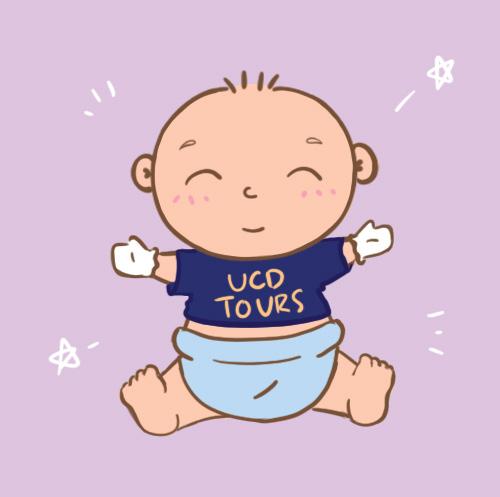
FIRST INSTANCE OF “BACKWARDS WALKING GENE” FOUND IN CHILD OF TWO FORMER UC DAVIS TOUR GUIDES
BY ELLIE SCHULTZ eeschultz@ucdavis.edu
Last week, UC Davis alumni Johannes and Clarissa Tompkins brought their 13-month-old daughter, Agatha, into Dr. Jennifer Cronenberg’s developmental genetics lab. Agatha, named in homage to her parents’ alma mater, only walks backward.
“She just got up and took a few long strides back without even looking behind her,” Clarissa recalled. “She maintained perfect eye contact with me while she did it.”
The couple met back in 2012 when they bumped into each other at the MU while giving their respective campus tours. Of course, both became much more skilled at walking backward before they graduated. In fact, Johannes still works as a guide in Old Town Sacramento. For the last month, Agatha has made backward strides around the house, at the park and into countless doctor’s offices, leaving health professionals utterly dumbfounded.

This case has Cronenberg and her lab staff completely reconsidering their stance on genetic determinism.
“This isn’t a mutation,” Dr. Cronenberg said. “Tompkins’ years of projecting over the racket of superfluous construction projects and walking the vastness of this very campus, the largest UC in acreage, have simply resulted in a child genetically-suited to be a tour guide.”
Imaging of Agatha’s feet shows a consistent morphology; a flatter ball and significantly more flexible tendons
compared to the average human.
Though baby Agatha hasn’t said her first words yet, Johannes hopes that when she does speak, her voice will be “kind, but deafening,” ready to follow in her parent’s footsteps.
Of course, the Tompkins want their daughter to enjoy childhood before being thrust into work because life as a tour guide can be draining. Long hours, excessive physical activity and endlessly dumb questions (there is most definitely such a thing) have historically deterred capable individuals from this line of work. But unfortunately, after taking more in-depth scans, it seems as though backward is the only direction Agatha will ever be able to walk.
Back in Cronenberg’s lab, the staff has seen Agatha as a glimmer of hope for an otherwise doomed human race.
Research assistant Leann Briggs reflected on this moment, almost forgetting that the university doesn’t pay her a living wage: “Maybe we aren’t completely set to evolve into technologicallydependent life forms, fused into our desk chairs. There are some funky fresh genes floating around, and maybe if I procreate with another grad student, our child will be able to survive without being able to cover the cost of living!”
Disclaimer: This article is humor and/or satire, and its content is purely fictional. The story and the names of “sources” are fictionalized.
action was taken, so strikes, historically, have been preventable. But, in many cases, the UC system hasn’t met union demands in time.
The strikes that result from the UC’s inaction also affect students and professors. Classes and discussion sections are canceled and some assignments are not posted or graded. This is a massive disruption to our education, not to mention that tuition is expensive and we pay per unit for each of our classes.
The strike has also disrupted transportation services on campus. Unitrans has delayed its operations and shut down some lines, which means students have had to find alternative routes to get to their classes. Further, some roads have been closed, resulting in unnecessary traffic for those who drive to campus.
Undergraduates, academic workers and professors shouldn’t have to bear the consequences that result from unfair labor practices and the UC’s inadequate response to union demands. The UC can and should prevent strikes from occurring. Put simply, student workers are essential for our campus to operate smoothly, and they deserve to earn a living wage and have their core demands met.
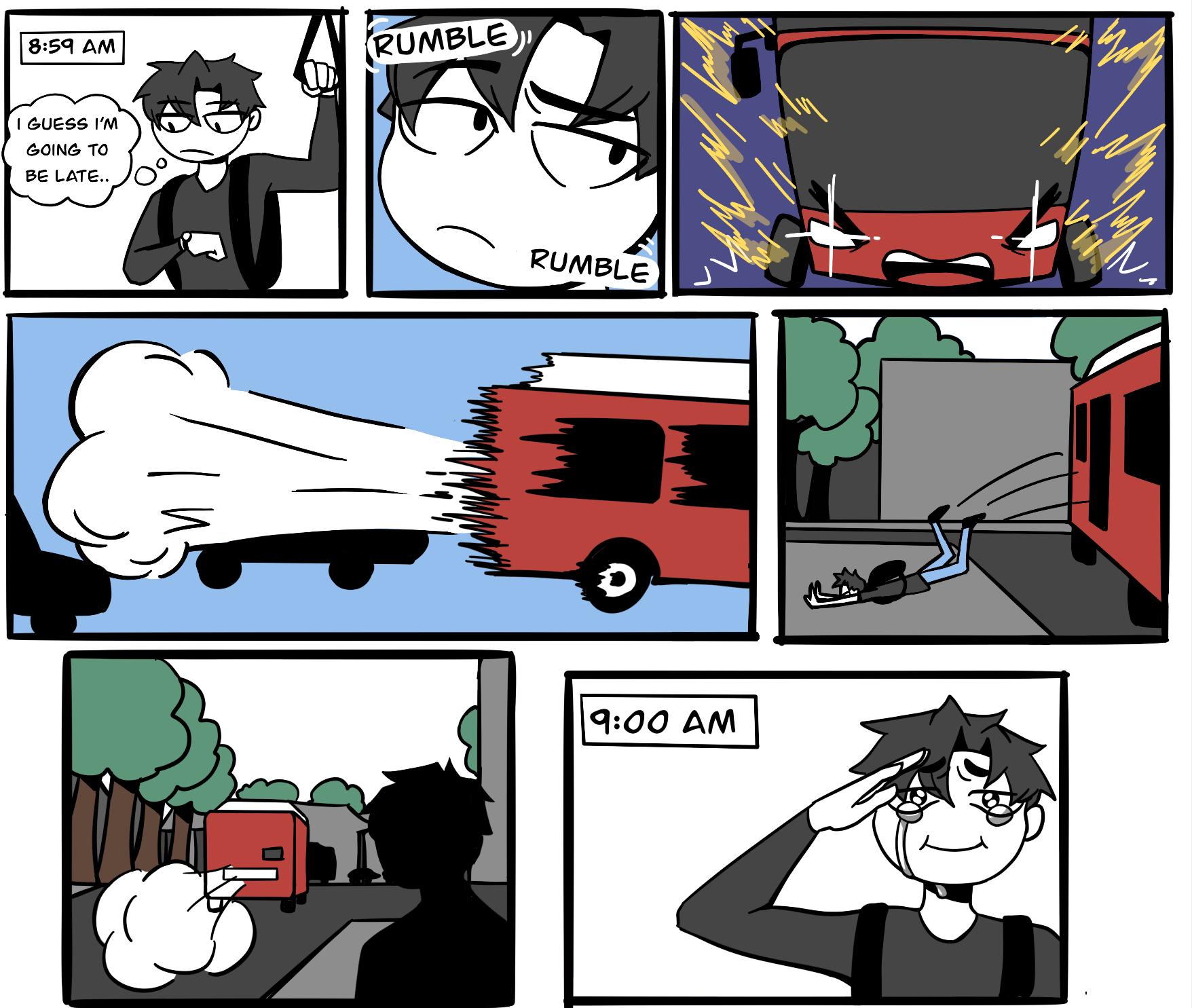
 WRITTEN BY THE EDITORIAL BOARD
WRITTEN BY THE EDITORIAL BOARD
GUNROCK SPEAKS OUT ON MASCOT VOTE
“I just didn’t see it coming”
BY ANGIE VELARDE avelarde@ucdavis.edu
Rejecting the student vote to replace the official mascot of UC Davis has left a bad taste in the mouths of many. But the controversial vote has had the biggest impact on one individual: a mustang named Gunrock. Ahead of the release of his new tell-all memoir about the vote, “Whinnying and Losing,” I sat down with Gunrock to talk about his life, his legacy and his feelings on the cow that might one day replace him.
“I mean, you give almost a century of your time to a place, and then they try to vote you out. It feels like a slap on the muzzle,” Gunrock said to me, shaking the mane out of his eyes. “I mean, have you seen me out there? I’m a star.”
Yes, Gunrock is aging — he’s been the mascot at UC Davis since the first half of the twentieth century, and his mannerisms and mid-century slang give him away — but the look in his eye is one of a much younger horse.
This year’s vote was not the first challenge to his status as mascot. There was another vote in 1993, but this one, he said, feels different.
“It feels like I’m getting forced into retirement. Young people just don’t respect their elders like they used to, and it’s destroying this country.”
He also responded to those students
who say that he does not represent them and instead represents an age of elitism and classism to which they do not feel connected.
“I’d say that the whole thing feels like hooey,” he responded as an assistant oiled his mane. “My trailer has windows, just like anyone’s. I’ve been attacked for spending too much on grooming, but I have an image to maintain. What do they expect?” He popped a sugar cube into his mouth and winked. “Sorry, I normally eat very well, but every once
in a while, my dietician allows me to have a little treat.”
At this point in the interview, I asked him to share his final thoughts on the vote to make the cow the official mascot of ASUCD, which was presented as a compromise to the rejection of the UC Davis mascot change.
“It’ll never happen,” he said.“They’d never vote against me.”
UNITRANS PULLING THROUGH
BY LIDYA SHCHERBAKOVA lvshcherbakova@ucdavis.edu
THE CALIFORNIA AGGIE THURSDAY, NOVEMBER 17, 2022 | 5
The UCs must do better to prevent disruptions that affect the entire academic community
EDITORIAL
SEE ONLINE
Scan to read about the Editorial Board’s favorite recipes for the cozy season.
But she can’t walk forwards. It’s a bit sad, actually.
GUNROCKSPEAKS on 8
Disclaimer: This cartoon is humor and/or satire, and its content is purely fictional. The story and names of “sources” are fictionalized.
HUMOR
MIRANDA LEE / AGGIE
MIRANDA LEE / AGGIE
ARTS & CULTURE
WHERE ARE THE HUMANITIES HEADING?
Students and faculty speak about the importance of these departments on campus
BY ADHITHI ANJALI arts@theaggie.org
UC Davis is well-reputed as a research university, most known for its position as an environmental powerhouse among universities nationwide. However, how does such prestige factor into the well-being of non-STEM programs on campus?
Andrew Haley, a fourth-year classical studies and evolutionary anthropology double major, heads the Classics Students Association and offers a unique perspective through his experience taking both science- and culture-oriented courses.
“The general sense that I get is that the university sees the Classics Department as a chance for non-majors to fulfill their [general education (GE)] humanities requirement,“ Haley said.
Having to balance an appropriate number of GE courses and in-depth, specialized courses is a tension that Haley saw frequently in his classic studies.
“I think anthropology, though still a small major, gets a little bit more room for specialized courses designed for majors,” Haley said.
Haley said that he has found a lack of diversity and depth of courses in the humanities, which he attributes to a lack of funding and, subsequently, professors.
“To be honest, I think the future of humanities at Davis is uncertain,” Haley said. “There’s been a trend with humanities departments at various institutions where, when someone retires, that position doesn’t get replaced.”
He expressed concern about the fact that these job openings tend to get filled by lecturers.
“Generally, [lecturers] get less benefits from the university [than professors], less job security and doing
research is not considered part of their employment,” Haley said.
Funding at the university level has become a problem in the lives of many scholars. Dominique Paz, who graduated from UC Davis with a degree in classical civilizations with an emphasis on languages, now works as a teaching assistant. Having transitioned into the working world, Paz said that finding work in humanities-based fields can be difficult.
“We’ve come across this issue where large companies and governments have funded STEM studies, which allowed more jobs and opportunities in those fields, but left the humanities in the dirt,” said Paz. “In some cases, even, [funding has been] cut, like in California.”
Dr. Tiffany Jo Werth, an associate professor within the Department of
English and recently appointed director of the Medieval and Early Modern Studies program (MEMS) at UC Davis, calls this the “self-fulfilling prophecy” of the humanities.
Werth said that the US lacks the “robust culture of supporting the humanities” that she experienced while working for the Simon Fraser University in Vancouver, British Columbia. She expressed a desire to find more funding to work and research with undergraduates.
“We used to have matching grants in Canada for undergraduate funding, so it was quite easy to hire and work with undergraduates,” Werth said.
Werth said that this issue comes from the top down. The lack of funding for research performed by the faculty limits their ability to work with undergraduates, and without
‘CUTEWARE CELEBRATION’ IS A LIGHT-HEARTED NOD TO THE IMPORTANCE OF PLAYFUL ART
professional academic opportunities, graduates of the humanities find themselves lacking in connection and direction.
“I think that is the main bridge that many star-eyed academics are lacking,” said Paz, speaking about the seeming dearth of entry-level jobs. “Many Ph.D. [holders] get their degrees then are like ‘What now?’ because their field is so niche.”
Dr. Keith Watenpaugh, a professor in and the founding director of the Human Rights Studies program at UC Davis, wants to see a movement from the university to “redouble its commitment to global education and embrace it as a core principle.”
“The modern American research university is really beholden to industry, grants and money,” said Watenpaugh. “The perception that humanities are
unwelcome or useless in a modern economy drives the flow of money within all universities, not just UC Davis.”
Watenpaugh heads Article 26 Backpack, which he believes is the largest undergraduate humanities internship on campus with between 16 and 24 students. It is built upon the core principle that there is a human right to education and culture as the product of both the arts and sciences.
Of grant-funding programs connected to UC Davis that specifically focus on the humanities, the University of California Humanities Research Institute (UCHRI) and the UC Davis Humanities Institute (DHI) are the most prominent on campus, but Werth said that they lack recognition from the student body.
“I would love to see those sorts of programs made more robust so we could have more centralized places of information,” Werth said.
Looking towards the future of humanities programs, Werth sees potential in UC Davis as an exciting place for collaboration between STEM and arts fields. Werth has already begun this cross-disciplinary work, organizing a symposium at the UC Davis Coastal and Marine Sciences Institute at Bodega Bay Marine Laboratory last May.
Similarly, Dr. Watenpaugh said that he would like to see a shift in the narrative of the humanities and sciences towards their being parts of a whole.
“We tend to envision the campus as divided — the people in authority on campus need to see how they are equal parts of the human experience,” Watenpaugh said.
ART
BY RUMA POUDELL arts@theaggie.org
The Artery is an artists cooperative located in downtown Davis that features new fine arts and contemporary crafts from local artists every month. From Oct. 28 to Nov. 20, The Artery presented “Cuteware Celebration,” a showing of ceramics and paintings by Heidi Bekebrede.
Bekebrede is a UC Davis alumna who graduated with a degree in studio art in 1980. She studied under wellknown professors such as Bob Arneson, who sculpted the eggheads that can still be spotted on the UC Davis campus, as well as Wayne Thiebad, Roy De Forest and Cornelia Shulz. Bekebrede has also made a positive impact on the community by teaching children’s painting classes in Davis.
After graduating and moving away decades ago, The Artery was one aspect of Davis that Bekebrede said drew her to move back to the college town.
“I still love The Artery because it has allowed my artwork to have lots of friends,” Bekebrede said. This outlet
has served as a way for many people to discover and enjoy the work of established and emerging local artists.
One of Bekebrede’s signatures is including eyes in her work, which she said is why a lot of her work has been perceived as “cute.”
“I kept hearing the word cute. Cute, cute, cute,” Bekebrede said. “I wasn’t sure if I liked that until I looked it up in the dictionary. The first definition was daintily pretty. But, the second definition was shrewdly clever — once I heard that, cuteware it was.”
Upon entering the Cuteware Celebration exhibit, what stood out immediately was the colorful palette of Bekebrede’s work and the intertwining of ceramics and paintings.
“I like to have every single color of the rainbow in every one of my pieces,” Bekebrede said. “To me, it’s like eye candy.”
Bekebrede’s work has a playful mood that stems from her personality; she carries a ceramic finger pickle and
strings in her purse just in case she runs into any of her students or someone who wants to learn string tricks.
Her exuberant style not only makes the process of creating art fun for her and fun for us to look at, but it also holds a deeper meaning: the importance of carrying a lighthearted manner throughout life. Bekebrede said that through tough and serious times, maintaining a hopeful mindset and being optimistic enough to accept your tougher feelings allows them to pass by easier.
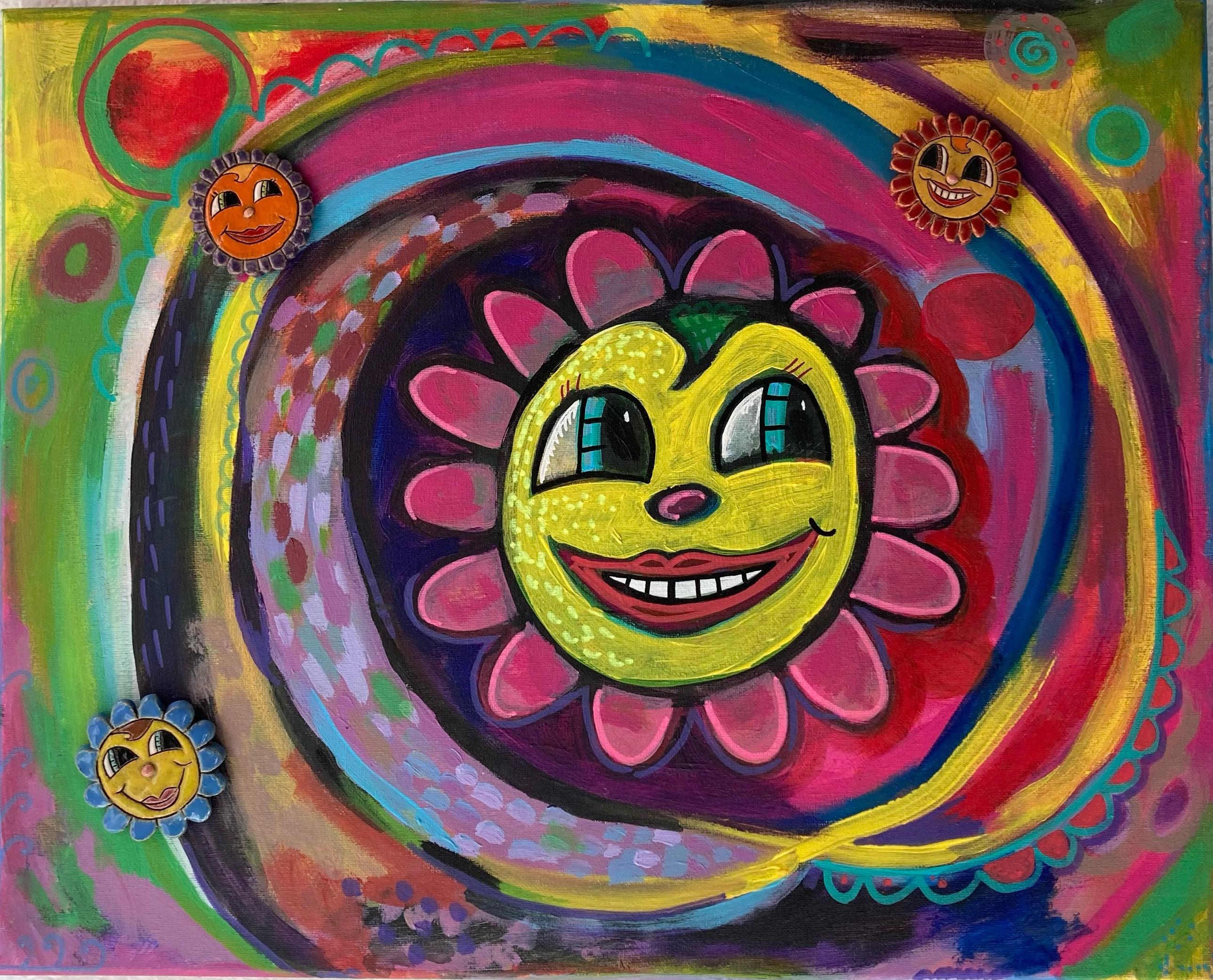
For emerging artists, Bekebrede has some advice: “Get some materials, maybe do it with a friend, take a class, maybe sip wine and paint. But get out and just do it.”
For more fine arts stories and showings, you can visit the Artery in downtown Davis or check out their website. Their annual holiday sale will begin on November 22 and their next monthly Art About event will be on the second Friday of December.
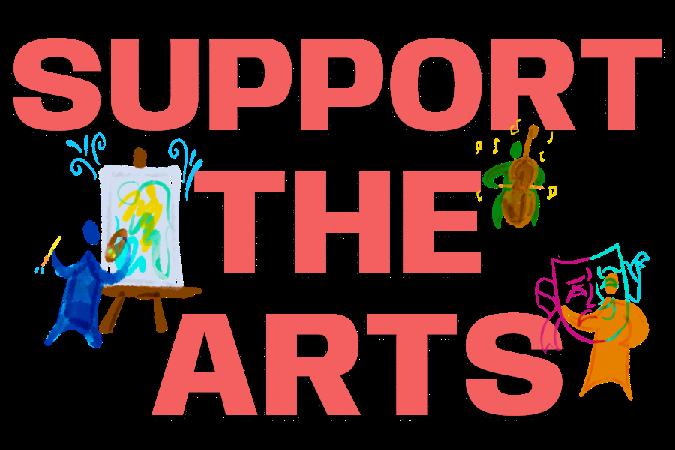
special
artist lecture
BY VIVI KIM arts@theaggie.org
Editor’s note: Quotes attributed to Xu Bing were originally spoken in Japanese but were translated into English.
On Nov. 1, The California Studio: Manetti Shrem Artist Residencies program hosted a special screening of “Dragonfly Eyes,” a feature film by the studio’s fall quarter spotlight artist Xu Bing.
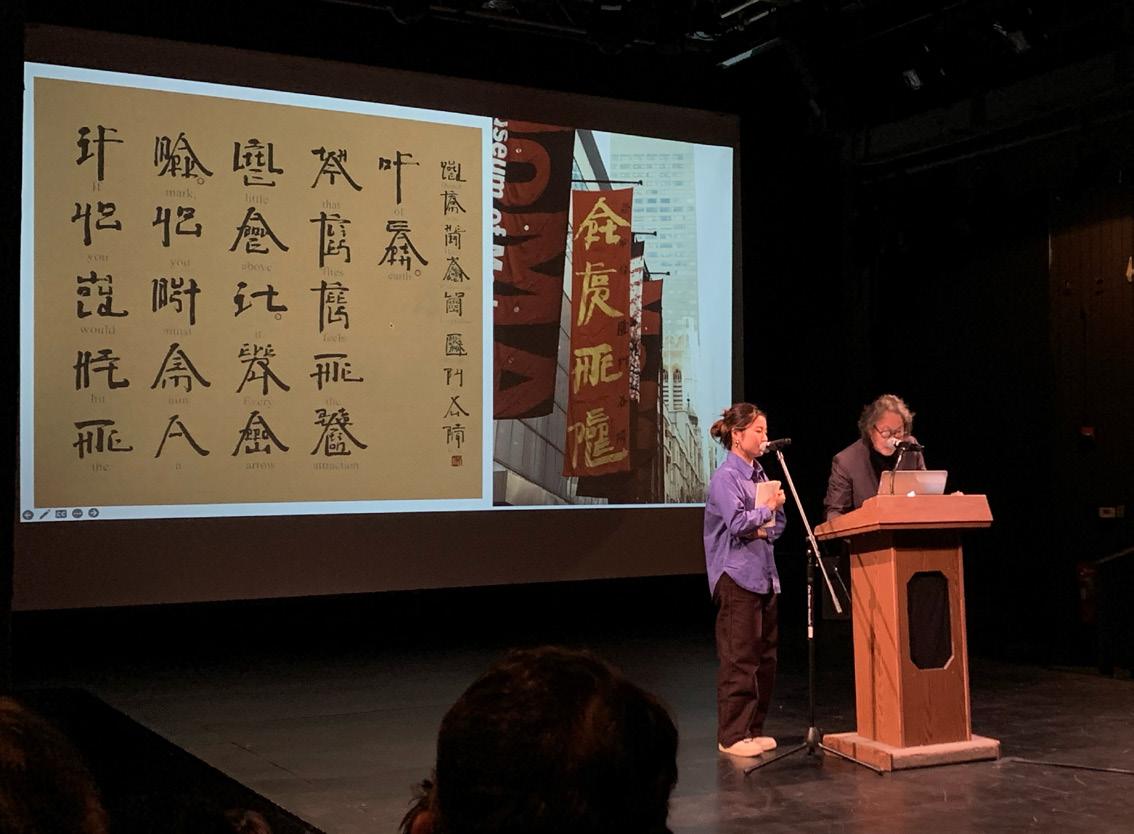
As shown through previous works of the artist, including his renowned “Book From the Sky,” Bing’s ability to create a fabricated sense of reality through art is proven yet again with this film. Consisting entirely of footage from surveillance cameras in China, the work is intentionally “embedded in experimentality” and introduces a unique method of filmmaking.
“I’m just really excited to be doing something that’s never been done before and that’s one of my greatest creative drives,” Bing said.
While the film itself is a collection of real-time footage, the story is completely fictional. It follows the life of Qing Ting, a young girl navigating modern China and getting entangled in romance after leaving her life at a Buddhist temple. Each event of the story is captured through surveillance clips edited together, giving the illusion of a false reality.
Bing’s method of storytelling
goes far beyond the boundaries of conventional filmmaking. He pieces together seemingly disparate events to form a cohesive story; one that distorts the audience’s understanding of reality and fiction. In an interview with Musee magazine, Bing explained that “Dragonfly Eyes” includes pieces of footage recorded years apart and edited together, guiding the audience to reflect on the themes of time and reality, both of which are central to the film.
In addition to the film screening, the California Studio hosted an artist lecture with Bing, during which he discussed his previous and most recent works in a presentation titled “My Creative Concepts and Methods.”
During the event, he explained his works in the context of modern contemporary art and defined the purpose of contemporary art in culture.
Bing said that artists produce work from a subjective realm of experience, but once the work leaves the studio and enters the realm of objectivity, it can become something entirely different.
“Everyone receiving it is bringing new meaningfulness to the work, including the artist, and they are also supplying content for the artist to contemplate,” Bing said.
6 | THURSDAY, NOVEMBER 17, 2022 THE CALIFORNIA AGGIE
CHRISTINA LIU / AGGIE
‘DRAGONFLY
EYES’
IS A
SURREAL AND INTRICATE EXEMPLAR
OF MULTIMEDIA
A
screening and
given by the director Xu Bing offers unique perspectives into the realm of contemporary art
How the showing, as well as others at The Artery, impact the Davis community
DRAGONFLYEYES on 8
on Nov. 3. (Vivi Kim / Aggie)
A piece available for viewing at The Artery’s Cuteware Celebration by Heidi Bekebrede. (Ruma Poudell / Aggie)
Xu Bing gives lecture at California Studio
DIVING INTO THE HISTORY OF TIME 100
TIME 100’s rise to fame includes triumphs, controversies and progress
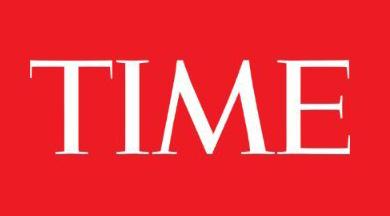 BY SARAH HAN arts@theaggie.org
BY SARAH HAN arts@theaggie.org
TIME 100 is an annual list, compiled by the Time magazine, of the 100 most influential people across the world. From celebrities to politicians, the list highlights individuals who have made a noteworthy impact in their fields.
The idea of the list initially rose in 1998 and a year later, the very first version was published. It put those selected under five categories: Leaders and Revolutionaries, Artists and Entertainers, Builders and Titans, Scientists and Thinkers and Heroes and Icons, and still follows the same format today. Of the 100 selected, TIME also gave the first “person of the century” title to Albert Einstein, with runners-up including the likes of Mahatma Gandhi and Franklin D. Roosevelt.

Since then, Time has annually released the list; however, many controversies rose along the way, which primarily stemmed from public disagreements about who deserves to be on the list. The most notable controversies surround the inclusion of Donald Trump, Greta Thunberg, Adolf Hitler, Joseph Stalin, Richard Nixon and Nikita Khrushchev.
However, Time has defended public pushback by explaining their objective criteria of choosing the most impactful people, whether that impact is positive or negative.
Apart from these controversies, however, TIME 100 has also given lesser-known individuals who have significantly impacted the world. These include rising stars as well as those who have been in the public sphere for a
long time.

Although Time consistently dedicates substantial effort and time to the list, there have been some significant mistakes. One example is when Time put Evelyn Waugh, a male writer, under the “100 Most Read Female Writers in College Classes.”

Despite errors, Time has been able to produce lists that generate an overwhelming amount of positive comments.
Part of the positive comments come from the continuous efforts of showcasing people of all different backgrounds, cultures, genders and more. In the 2019 list, for example, nearly half of the people listed were women, which was the highest amount since the creation of TIME 100. Likewise, the 2017 list promoted racial diversity, highlighting people of various racial ethnicities.
This year’s list also includes a diverse set of individuals, ranging from ice skater Nathan Chen to women’s rights activist Hoda Khamosh. There were some on the list who have previously been given the distinction, such as Adele, which shows how the list reflects various backgrounds.
Overall, TIME 100 has not only greatly influenced the world, but also inspired and taught millions by showcasing impactful individuals. Seeing that the list is developing in a positive direction, it seems as though Time will continue to shed light on those who have changed and will continue to change the world.
BY CLARA FISCHER arts@theaggie.org
Song: “Sign of the Times” by Harry Styles (2017)
I wouldn’t consider myself a Harry Styles superfan, but after seeing him live, I might become one. His debut single remains, in my opinion, one of the best off his discography, and seeing it live was a quasi-out-of-body experience. The lyricism, musical production and vocal performance on this track are top notch, and Styles backs it up with his live performance. Bringing energy and vocals to every song performed, “Sign of the Times” was one of the most special parts of the show because of its emotional pull.
Book:
Yes, this book is part of the much disputed classical canon, and most people probably only know it from being forced to read it during junior-year English class. However, I consistently claim this book as my favorite of all time for its beautifully melancholy prose and complex themes — at the end of the day, what motivates all of us? Was Gatsby truly in love with Daisy, or did she represent something greater than one human could ever live up to? Fitzgerald has a way of exploring concepts that resonate across generations, especially for young adults — the search for identity and a sense of belonging is something that transcends any zeitgeist.
TV Show: “Dancing with the Stars” (2005)

When it comes to reality TV shows, I like mine as cheesy and nonsensical as they come, and “Dancing with the Stars” is pretty high up there. Whoever thought of the idea to enlist as many celebrities (a generous term with the likes of some of the contestants of recent seasons) as possible to learn how to ballroom dance is so silly that it actually becomes entertaining. It’s honestly heartwarming to see the effort most contestants put into bettering their scores every week, and it’s easy to get (and stay) invested until the end of the season.
Movie: “Heathers” dir. by Michael Lehmann (1989)

Think “Mean Girls,” but with a murderous streak. I’m a sucker for any form of media exploring the complexities of the female adolescent experience, as well as anything that uses colors as a form of symbolism. “Heathers” delivers on both counts, with the story focusing mainly on the dynamics between Veronica, JD and the titular Heathers (Chandler, McNamara and Duke), as well as other students at Westerburg High. With a stellar cast, compelling themes and sardonic dialogue (who could forget Heather Chandler’s iconic chainsaw line), this classic teen movie is worth the watch.
COMMENTARY: HOUSE MUSIC CONCERTS OFFER A UNIQUE EXPERIENCE FOR LISTENERS
How artists such as Rúfüs Du Sol are creating a calm, safe escape through their performances
BY ANA BACH arts@theaggie.org
On Oct. 7, I had the opportunity to attend a Rüfüs Du Sol concert at Shoreline Amphitheater in Mountain View, CA. For those who don’t know, Rüfüs Du Sol is a musical group composed of three men from Sydney, Australia who produce music mainly in the electronic dance-pop genre intersected with house music beats. I’ve been eager to immerse myself in the house music scene after being an active listener of the genre for years without ever experiencing a live performance.
Initially, I was intrigued by the electronic music experience and how it naturally differs from the typical style of a concert that many may have become accustomed to. Rather than chanting anthems and sharing the joy of the artist’s presence, concert-goers listening to house music enjoy an experience that caters to them rather than catering to the appreciation of the artist. This can be seen in the music that creates this hypnotic sensation where the listener is really just trying to match the beats of the song and focusing on that alone. The musicians don’t have as overwhelming of a presence as the music does.
I was quite interested in the history behind the sound, since I previously assumed it was a niche genre with little knowledge among listeners about the importance of its background. I wanted to unpack these assumptions more before going to the concert and decided it would be beneficial to explore the origins of house music.
One of the key pioneers of the house music genre, Frankie Knuckles, has been dubbed by many as the “Godfather of House.” Originally born in New York, Knuckles played many shows at the Chicago Warehouse club in the late 70’s. Through this experience, he laid the roots of the house sound we now know and love out of a combination of disco, funk, R&B and other similar styles of dance music.
At the Rüfüs Du Sol concert, I noticed this style through their use of beats in a formula format. It doesn’t follow the format that acoustic music follows — the creation of it seems so calculated, with each beat matching the others in sequence. All you are really left

listening to is sounds on a loop, which is somehow soothing in its consistency.
In a time where everything seems so hectic and unpredictable, music provides a safe haven for many. House music in particular creates a soothing escape from reality where anyone can where anyone can vibe to the beats, even
if they’re not familiar with the artist. The sounds were synchronized with a mix of real instruments and electronic recordings that worked hand in hand to create a calming wave of binaural beats. While listening, I felt an overwhelming feeling of relaxation, and the open space venue really made it feel like a
comfortable individual experience in a sea full of people.
Overall, I was completely taken aback by the experience and extremely impressed with the impact the group had on the audience members. As the concert went on, I noticed each song seamlessly transitioning to the next,
with little distinctions in the shifts. This kept the energy levels rather consistent throughout the show.
If you are like me and are curious about the live house music experience, I would highly suggest attending a concert and observing its unique aspects for yourself.
THURSDAY, NOVEMBER 17, 2022 | 7 THE CALIFORNIA AGGIE
“The Great Gatsby” by F. Scott Fitzgerald (1925)
Time100 logo. (Courtesy of Time / fair use)
KELLIE LU / AGGIE
The Arts Desk’s weekly picks for music, movies and more
“It’s very important that [the three unions] could align all of our bargaining,” Anleu-Gil said. “[There are] 48,000 workers actually in negotiations with the university, and [we’re] working very closely together. Our demands were very much in coordination so that we could have a unique power.”
As the strike authorization vote took place and before the strike began, Michael Brown, the provost and executive vice chancellor for academic affairs for UC Office of the President, sent out an email to faculty members with an update on the university’s position.
“The University and the Union remain far apart on some [...] key
issues not related to economics,” the email reads. “The union is taking a strike vote across all four bargaining units. In the meantime, the University is taking active steps to prepare for work stoppage, while also continuing to bargain in good faith with the Union.”
Picket lines are on Russell Blvd. and Howard Way, as well as Hutchison Drive and La Rue Rd., from 9 a.m.1 p.m. and from 12-4 p.m. for the remainder of the strike.
Kaya Do-Khanh and Sonora Slater contributed to this report. Editor’s Note: This story is developing. Check online for updates.
“It was such a cool community to feel a part of,” Swanson said. “Everyone was so knowledgeable and willing to help me, whether I was looking for a plant or wanting to get involved with the community garden. The plants were super affordable, which is super cool considering that they aren’t that accessible in a lot of places. I definitely see myself getting involved in the future.”
Lagrave said that in hopes of promoting more community involvement in future plant sales, volunteers handed out informational
CONCERTETIQUTTE
CONTINUED FROM PAGE 4
pamphlets at the final sale about how community members can become involved with upcoming events. She also outlined the qualifications for volunteers.
“You can be as unqualified as you’d like,” Lagrave said. “We have a bunch of people that have just a mild interest in plants and they’ll volunteer here. Our interns who have been here only a few weeks are already on the sales floor. You know a lot more than you think.”
Lagrave said that while she works on the Nursery Management team every season, interns can pick and choose the
seasons and events they want to work.
Although this was the concluding plant sale of the fall 2022 season, volunteers promoted the upcoming spring 2023 season throughout the event. The dates for the spring season sales will be announced soon, according to the Arboretum website.
Larissa Thatcher, a third-year environmental science and management major and intern at the Arboretum, said that they have “never been this fully stocked for spring.”
“It should be a good season!” Thatcher said.
CONTINUED FROM PAGE 1
In order to assist the association and reach this settlement, Kristen gave a prepared testimony that addressed the violations and put forth specific steps Davis should take to comply with the act. Two years later, a settlement was finally reached on Oct. 27, 2022. Kristen explained the improvements that the settlement will provide.
“They’re going to do everything, from things that seem small, like access to drinking water, to bigger improvements like dugout improvements, adding more shade and creating better storage,” Kristen said. “There’ll be a multi-use building, there’ll be some lights which allow them to use the fields more and there’s going to just basically be generally
HULLEAH
CONTINUED FROM PAGE 3
“I believe Davis is the only [UC] that has a Native American museum on its campus,” Villegas-Frazier said. “And so with her leadership, […] with the work that she did at the MoMA and all the work that she’s doing now, it’s amplifying Davis as a community that’s supportive of its Native community. I think it’s also giving power and voice to a community that may never have had it before. It’s just really providing amplification of Native folks and Native communities.”
The C. N. Gorman Museum is being expanded to double its previous size
GUNROCKSPEAKS
CONTINUED FROM PAGE 5
I informed him that they had, in fact, voted to make the cow the official mascot of ASUCD on Sept. 30, and he was quickly shuffled out of the room before I could get his response. We have since reached out to Gunrock’s representatives to see if they have an answer to our question, but were told
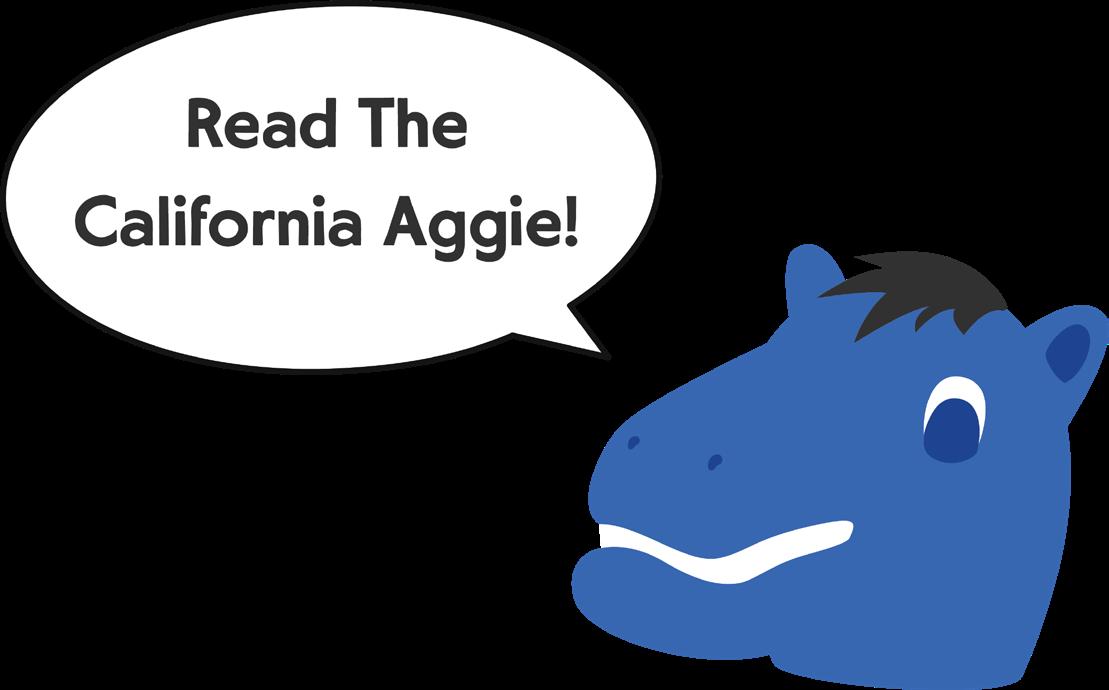
DRAGONFLYEYES
CONTINUED FROM PAGE 6
Bing’s process of taking real events and recontextualizing them visually is not only a unique method of storytelling but also a way of bringing new meaning to the original perspective. Rather than
UCDMBBVSCM
CONTINUED FROM PAGE 12
The
improved facilities and maintenance of those facilities.”
With these changes, the DYSA hopes to provide better opportunities for girls to play softball. Martinez said that the board, players and parents are all looking forward to these improvements which previously seemed unattainable.
“It’s wonderful for the girls to grow up in a place where, when you see something that’s wrong and not right or not just, [...] you speak up and you work hard and you never give up. Then things will happen,” Martinez said. “And I’m really proud of what we’ve done and what the girls in this generation and the future generations will have because of the tenacity of this board.”
A notable event where I noticed the change in behavior from a crowd was during Drake’s performance at the Camp Flog Gnaw music festival in 2019. He was the surprise performer, but fans had speculated and hoped that Frank Ocean would make an appearance instead. After all, Frank Ocean was a more fitting and exciting surprise for fans than Drake would ever be. This became clear after the crowd booed him off stage and cut the set an hour early. The initial reaction from the crowd was completely disrespectful to Drake, as he had only tried to entertain them and the organizer of the festival, Tyler the Creator.
However, some argue that Tyler could have chosen a better performer that suited his fan’s expectations. I mean, as a Tyler fan myself, I’ve noticed that the majority of his fans are from his flower boy and post-Igor era, which
BIGPHARMA
CONTINUED FROM PAGE 4
more aligns with Frank Ocean’s genre of music than Drake’s. In a way, it’s understandable that fans might get angry, as Drake’s music is such a departure from what the attendees of Camp Flog Gnaw were expecting from the event.
Controversial behavior during Steve Lacy’s current tour has caused a major discussion about bad habits at concerts. A viral video shows a fan throwing their disposable camera at him on the stage and Lacy responding by smashing it. The pattern continued in a Tik Tok of a fan yelling “Can you say hi to my mom?” as he was about to start a new song, to which Lacy responded, “Can you be quiet?” This interaction clearly shows that there is a lack of respect for Lacy and his music, particularly from his newer fans.
As we gradually come out of the pandemic and start going to more live
music events, I think it is important to remember that we — fans and performers — are interacting with each other. Concerts are an exchange of human experience and energy that we often take for granted. And as fans, we are also interacting with the people around us, and our behavior affects them as much as their behavior affects ours.
I can go on and on about how it is important to not push through a crowd or block someone’s view (which is all true), but I mostly want to emphasize it is important to be aware of the people in one’s environment. Live music is more fun when everyone is trying to make the concert the best experience possible for each other. Make sure you keep your fellow concert-goers in mind next time you see your favorite band.
and feature more Indigenous artwork from students and faculty, which Tsinhnahjinnie is actively working on. She hopes to use her pieces to depict a sense of community and inspire a new generation of artists at UC Davis.
“When one looks at being an artist from a holistic Indigenous type of beautiful is that you don’t just focus on yourself, which is more Western, but you really include community, and community is paramount, and that’s who you’re doing your work for,” Tsinhnahjinnie said.
Right now, health insurance companies typically have the capacity to negotiate with Big Pharma companies because they cover a majority of client healthcare costs. However, those who can’t afford insurance need the government to step in as an advocate to create deals with these drug companies that ensure profitability and provide a cushion of coverage for low-income people.
In creating this close relationship between the government and pharmaceutical companies, you can essentially eliminate the middleman between drug developers and those who pay for the medicine; the fewer people involved, the lower the associated costs and the more direct communication in regard to prices.
interactions between these two key players and ensuring a prompt response to public health emergencies.
In fact, there are already federal government healthcare programs around the world that work precisely in this way. For example, the statelevel eradication programs of hepatitis C in Georgia engaged pharmaceutical companies and allowed them to recoup their costs by buying in bulk to cover more people. Thus, lower prices were artificially created through government intervention, while the profitability of the pharmaceutical industry remained relatively unimpacted.
perspective, a healthier society overall means a more reliable workforce and therefore a stronger economy. Keeping citizens healthy should be a major priority of the federal government, not only for ethical reasons, but also because of economic implications.
It is undeniable that Big Pharma is first and foremost a business, yet it is irrational to assume that they are overcharging customers solely on the basis of exploiting them to make a profit.
that he is “unavailable for comment.”
“Whinnying and Losing” will be officially released on Dec. 1.
Disclaimer: This article is humor and/or satire, and its content is purely fictional. The story and the names of “sources” are fictionalized.
using surveillance footage to create an aesthetic experience for the audience, Bing displays objectivity that can be interpreted in various ways.
An additional benefit of cutting out the middleman would be a quicker reaction time to events like pandemics. With the government and pharmaceutical companies working together, drugs could be developed faster and more efficiently, tightening
DAYINDAVIS
CONTINUED FROM PAGE 10
According to the conservatory’s website, there are nearly 4,000 specimens on display that you can view through tours that are available to the public. The conservatory is open Monday through Friday, from 9 a.m. to 4:30 p.m. on Shields Avenue.
To wind down your busy day in Davis, stop into the Root of Happiness Kava Bar. It features a well-curated ambiance with murals, plants and tons of cozy seating. For those who are 18 and older, grab a kava drink and enjoy the relaxing benefits of the beverages.
According to their website, their drinks are made from a kava root
MLSCUP
CONTINUED FROM PAGE 12
“It’s Gareth being Gareth, he does it in training, he’s done it this season when he’s feeling well and healthy, he makes a difference in games and that’s why we bring him in those moments,” Cherundolo said of his decision to bring in Bale in the 97th minute.
“It’s always nice to score in finals, and I seem to have the knack in doing that,” Bale said in regard to his lastminute goal.
With the score tied after stoppage time, the match then progressed to penalty kicks. McCarthy, LAFC’s substitute goalkeeper, came up big for his team in arguably the biggest game of his career thus far.
“To be a Philly kid and play against my hometown team — it’s their first final ever — it’s something special,” McCarthy said. “It was just a moment that you dream of as a kid, to play in a final. I wish it was against somebody else, honestly, because I feel for the team and the city. If we weren’t in it and Philly was in the final, I would for sure root for them.”
After multiple rounds of back-andforth scores on penalty kicks, the game came down to Philadelphia’s Martinez. McCarthy dove to his right, blocking the PK and eliciting roars from the crowd sporting LAFC’s black and gold colors.
LAFC defender Ryan Hollingshead
The government playing a larger role in assisting citizens with healthcare can also reduce future costs by making the process of recovery faster and more efficient for individuals and reducing the probability of the progression of a disease or chronic illness. An example of this is curing hepatitis C early on, before the more costly surgery and liver transplant.
Finally, from a macroeconomic
The issue of increasingly high prices can be solved by eliminating middlemen. By creating a collaborative relationship between the federal and state governments and drug companies, patients who normally cannot advocate for themselves will have a voice, ensuring that prices are manageable while keeping Big Pharma companies profitable and operational. This is a difficult and strenuous process, I know, but one that is extremely necessary for both pharmaceutical companies and those they serve.
sourced from Hawaii, and it’s a drink that’s been enjoyed by Pacific Islanders for over 3,000 years. Share a drink with some friends and enjoy the positive, relaxing sensation that kava brings.
Farah Noor, a third-year political science major, goes to the Kava Bar with friends often.
“I used to go with this group of people, and it was our weekly activity,” Noor said. “Even if you don’t drink kava, it’s just a comfortable environment.”
She said that the space itself is what draws many people into the Kava Bar.

“They have couches, magazines, a great environment and amiable service
that attracts customers,” Noor said. “I have literally fallen asleep there before.”
Root of Happiness is also a great place for people who are under the age of 21 and looking for a place to go out and enjoy themselves with friends.
“It has that unique touch in Davis,” Noor said. “Not a lot of students can go to the [21-and-up] places in Sacramento and Davis, so it’s a great 18-and-up spot.”
After a long day spent hopping around Davis, we hope you can see all the great variety of activities, restaurants and local spots the town has to offer.
midfielder did his part in making the next penalty kick, and McCarthy ended the game with another stop, this time of defender Kai Wagner’s PK attempt.
“It’s the highest game I’ve ever played in; it’s the highest game I’ve ever been on the bench in; it’s an amazing moment,” McCarthy said in an exclusive interview with The Aggie after the game.
McCarthy’s heroics earned him the MLS Cup MVP honor. From only playing in one regular season game to coming off the bench into one of the most important games of his life, McCarthy played an integral role in delivering the city of Los Angeles the MLS Cup.
“You can see how happy everybody is now — the fans, the city,” Bale said. “It’s important for this club to go to the next level, and I think by winning this trophy, it shows that we are.”
The Growth of the MLS in Recent Years
As soccer continues to grow in popularity within the United States, the MLS has been expanding. Since 2015, the league has introduced 11 teams. Of those new clubs, three have won the MLS Cup since their inauguration into the MLS — Atlanta United in 2018, New York City FC in 2021 and now LAFC in 2022. Many of these squads
were also featured in this year’s playoffs.
With this growth, star players with extensive backgrounds in topflight European leagues, like Javier “Chicharito” Hernandez, Carlos Vela and Gareth Bale, have come to play in the MLS. These players have been crucial to the growth of the MLS because of their notoriety at the international level. Ultimately, more clubs and internationally-known players have meant more eyes on MLS as a whole. The 2022 MLS Cup drew a combined 2.155 million viewers between Fox’s English-language broadcast and Univision’s Spanish-language broadcast, up from 2021’s championship, which drew 1.557 million viewers.
MLS ratings in general are also up across ABC and ESPN. The average audience across both networks is 343 thousand per game, which is a 16% increase from last year.
MLS has partnered with Apple TV+ to help grow soccer in the United States. MLS reached a 10-year agreement worth $2.5 billion with Apple TV+, set to begin in 2023. Subscribers will be able to stream every MLS game on a global scale.
MLS is no longer considered an “irrelevant” league; it’s turned the corner in American sports, and with the World Cup coming to North America in 2026, soccer is only going to keep growing.
8 | THURSDAY, NOVEMBER 10, 2022 THE CALIFORNIA AGGIE
FAIRPLAY
ARBORETUMSALE CONTINUED FROM PAGE 3
STRIKEAUTHORIZATION CONTINUED FROM PAGE 1
Aggies are now 2-1 after a loss to Loyola Marymount University on the road on Nov. 12. The Aggies will host Arkansas State on Nov. 18.




THURSDAY, NOVEMBER 17, 2022 | 9 THE CALIFORNIA AGGIE
CROSSWORD r edu c e . r eu s e . r e cycl e . T h e a gg i e
Scan to upload your completed crossword for the chance to win a prize!
SUDOKU Enter digits from 1 to 9 into the blank spaces. Every row, column and 3x3 square must contain each digit. Each Sudoku has a unique solution that can be reached logically without guessing. Answer to previous puzzle 11/10/22
Answer to previous puzzle 11/10/22
THE WORK OF A UC DAVIS EMERITUS ART PROFESSOR WITH THE ROBERT ARNESON
YEAR MEMORIAL EXHIBITION
BY MARIA MARTINEZ CASTRO features@theaggie.org
On the second floor of the John Natsoulas Center for the Arts, the work of famous artist and UC Davis Emeritus Art Professor Robert Arneson sits waiting for the Davis community to see. As one walks through the space and steps on the creaky wooden floors of the gallery, one can admire the art forms Arneson was most famous for — ceramics and self-portraits.
Just as you reach the top second floor stairs, you are greeted with a cheeky self-portrait of the artist as he stares at you picking his nose in an explosion of color. Further into the room, one encounters ceramic forms of foods, bricks and deadly portraits of Cold War United States and USSR army generals.
The Robert Arneson 30-Year Memorial Exhibition will run from Nov. 2, 2022 to Jan. 7, 2023 at the John Natsoulas Center for the Arts in downtown Davis. The exhibit honors the late artist, his art and his contributions to the UC Davis Department of Art.

Arneson is renowned for his ceramics work, his massive influence on the Funk art movement, self-portraits and establishment of the famous ceramics art studio TB-9 (Temporary Building 9) at UC Davis.
“He revolutionized sculpture and he created, there’s a movement on the first floor, called Funk art,” John Natsoulas said, founder and runner of the John Natsoulas Center and Arneson’s mentee. “He was the clay godfather of Funk art. There are painters in there; there are sculptors in there, but he was it.”
Arneson’s career at UC Davis spanned three decades, from 1962 to his retirement in 1991. While at university, Arneson and his students changed the trajectory of ceramics as an art form. They did so in the margins at the famously known TB-9 studio on campus.
“Temporary Building 9, which was the ceramics building, you know how that started?” Natsoulas said. “That’s where Food Science had all of their fruit. A lot of their fruit and vegetables were canned and jarred and stored there. It was a giant fruit and vegetable storage, and these guys and gals ate it all for them to have room for them to have
this big ceramics warehouse.”
Simon Sadler, chair of the UC Davis Design Department and professor of design, speaks to the revolutionary aspect of Arneson’s ceramics works and TB-9.
“It is a bit of a marginal art form,” Sadler said. “But UC Davis is a bit of a legend in ceramics. Arneson was famous for creating a culture around TB-9 […] Arneson was a bit on the margins as a ceramicist, in a department that was on the margins […] in the 1960s and ‘70s.”
Natsoulas also recognizes the importance of Arneson’s influence on ceramics at UC Davis.
“The impact of TB-9 at that time
A DAY IN DAVIS
BY REBEKA ZELJKO features@theaggie.org
Some believe that an unassuming town like Davis doesn’t have much to offer beyond its cows and pastures, but locals say otherwise. If you’re just visiting, or looking for something new to do with your friends, here is a curated itinerary to best enjoy what Davis has to offer. Try beloved eateries, experience beautiful nature and visit incredible museums frequented by Davis residents.
The first stop on our list is the local coffee shop Mishka’s. Stepping into this brick building, you’ll be immediately welcomed by tall ceilings, warm lighting and the smell of freshly-brewed coffee. Artwork from local artists is on display and for sale.
Mishka’s is always buzzing with people, whether they be studying for a final or catching up with friends. According to the Mishka’s website, the coffee shop was established in 1995 and inspired by European cafes. Their emphasis on quality, locally-made products is felt every time you take a sip of the coffee they roast and brew themselves.
Hukum Sekhon, a fourth-year environmental science and management major, is a regular at Mishka’s.
“The ambiance of Mishka’s is honestly why I keep going back,” Sekhon said. “It’s a great spot to study at, and they always get your coffee out fast no matter how busy they are.”
Mishka’s serves a variety of drinks and food without compromising the quality.
“All of the coffee and pastries are honestly amazing,” Sekhon said. “You can’t go wrong with any of them.”


Mishka’s long-standing presence in Davis is a testament to the quality, consistency and ambiance many locals have grown to love. The cafe is open every day at 7:30 a.m. on 2nd Street and is worth a visit.
“Mishka’s just feels like that special local coffee shop,” Sekhon said. “You always know what to expect going into there. They don’t disappoint.”
After grabbing a cup of locally roasted and brewed coffee, we recommend you bike or walk over to the UC Davis Bohart Museum of Entomology.
According to their website, the Bohart Museum was established in
was huge,” Natsoulas said. “Now, there are no ceramics sculptors working in the graduate [department]; there is not really that kind of movement because he was so amazing.”
However, Arneson’s legacy at UC Davis extends beyond the ceramics Funk art movement and TB-9. Students on campus can witness his work every day by walking by Shields Library, Mrak Hall and the UC Davis School of Law.
Arneson is the mastermind behind the creation of the famous Egghead sculptures on campus. As fun and carefree as the sculptures may seem, there is a deeper message for UCD’s population from Arneson.
“My read of them is that they are critiques of the university,” Sadler said.
“They are kind of endearing, but they are critiques. An egghead, you know, is a euphemism for an intellectual.
[…] Arneson was probably like […] at once sort of happy and grateful to be at the university and on the other hand thinking, ‘What the hell am I doing at the university? Why am I with all these other eggheads who think that everything’s gotta be scientific and provable when clearly I’m a counterculturalist, full of emotions and fun-loving?’”
The Eggheads and exhibition at the John Natsoulas Gallery showcase
the intricate work and mind of an important artist and professor in UC Davis history.
“The big legacy is of art at UC Davis,” Sadler said. “And it’s been sort of a hidden legacy for a long time. Arneson was famous […] but we’ve never quite known what to do with that legacy, and I think [what] the creation of the Manetti Shrem Museum does is [help] solidify UC Davis, not just as one of the world’s preeminent centers of agriculture and animal science, but it’s also a weird place where you can go study the arts out in the tomato fields. And there’s a long legacy there.”
1946, and their collection of over seven million specimens is the seventh-largest in all of North America.
Joseph Johnson, a third-year political science major, discovered the museum, which he describes as a hidden Davis gem, earlier this year.
“I went with my girlfriend over the summer when they were celebrating the California butterfly, and the staff was so excited to involve students in entomology,” Johnson said. “I would recommend it to anyone who is struggling to find a new place to explore [in] Davis.”
The Bohart Museum is exemplary of the diverse activities Davis has to offer. The enthusiastic staff and impressive variety of insects that many visitors would otherwise never see make it a unique spot.
“It’s the only place where you can hold roaches or get an up-close-andpersonal look at some of the most beautiful insects in our world,” Johnson said. “You have free rein to look through the thousands of pinned insects.”
The Bohart Museum is open Monday through Thursday from 9 a.m. to 12 p.m. and 1 p.m. to 5 p.m.
When you are in need of a midday
pick-me-up, Zia’s Delicatessen is wellknown and recommended. Opened in 1995, Zia’s offers an array of Italian products like jams, cured meats, traditional Italian desserts and delicious made-to-order sandwiches.

Kayle Chavez, a fourth-year psychology major, is a repeat customer at Zia’s.
”It’s a one-stop shop for all your Italian snacks, foods and coffees,” Chavez said. “There’s no place like it.”
She said that their products’ quality and value sets Zia’s apart from other food spots in Davis.
“Why would you go to Panera when you could go to Zia’s for cheaper and better quality?” Chavez said. “Zia’s is a bang for your buck because everything is so high-quality, and it is superior to any other sandwich shop in Davis by far.”
Zia’s serves something for everyone.
“The sandwiches are super customizable, and there are so many options to choose from,” Chavez said. “They have a lot of vegetarian options, too, which is great.”
The local feel is very important to Zia’s.
“The deli has created an extended family of customers,” owners Kevin and
Anne Marie Crilly said on Zia’s website. After grabbing a sandwich at Zia’s between 10 a.m. to 3 p.m. on 3rd Street, head to the UC Davis Botanical Conservatory. Its arrow pathways are overflowing with flora its beautiful sanctuary is teeming with plant life that everyone can visit.
Zhuowen Kong, a fifth-year biomedical engineering major, said that she loves going to the conservatory in her free time.
“Do you not want to be amazed by nature?” Kong said. “The leaves are taller than you, and the color is just fascinating. And the way they are laid out, it’s so aesthetically pleasing. It makes you feel like you are walking through a jungle.”
Kong also pointed out that the conservatory is a great place for plant enthusiasts to visit, but everyone can gain an appreciation for nature by going to the conservatory.
“For people who love plants in general or just interested in nature, they have a great range of plants,” Kong said. “But I’ll take anyone I know there. It’s just fantastic.”
10 | THURSDAY, NOVEMBER 17, 2022 THE CALIFORNIA AGGIE
Dive into Arneson, the artist behind UC Davis’s famous Eggheads
GALLERY CELEBRATES
THE JOHN NATSOULAS
30-
Follow an itinerary curated by locals to visit popular spots downtown and on the UC Davis campus
DAYINDAVIS on 8
The John Natsoulas Art Gallery in Downtown Davis presents the 30 year memorial exhibition for UC Davis professor Robert Arneson. (Isabella Smithsuvan / Aggie)
Mishka’s.
(Rebeka Zeljko / Aggie)
Root of Happiness Kava Bar. (Rebeka Zeljko) / Aggie)
Zia’s Delicatessen. (Rebeka Zeljko / Aggie)
UC DAVIS RESEARCHERS COMBINE CIVIL ENGINEERING AND BIOLOGY TO MODEL STRONGER INFRASTRUCTURE USING SNAKESKIN
Snakeskin has frictional properties that can be applied to surfaces of large column structures to securely support large buildings
BY YASH RATHI science@theaggie.org
At the UC Davis Center for Geotechnical Modeling, researchers used the facility’s large geotechnical centrifuge to test a design inspired by the unique properties of snakeskin. According to their website, “A geotechnical centrifuge is used to conduct model tests to study geotechnical problems such as the strength, stiffness and capacity of foundations for bridges and buildings, settlement of embankments, stability of slopes, earth retaining structures, tunnel stability and seawalls.”
Alejandro Martínez, Ph.D., who is the lead author on the research study and an associate professor of civil and environmental engineering at UC Davis, explained the team’s interest in snakeskin and its potential real-world applications to infrastructure.
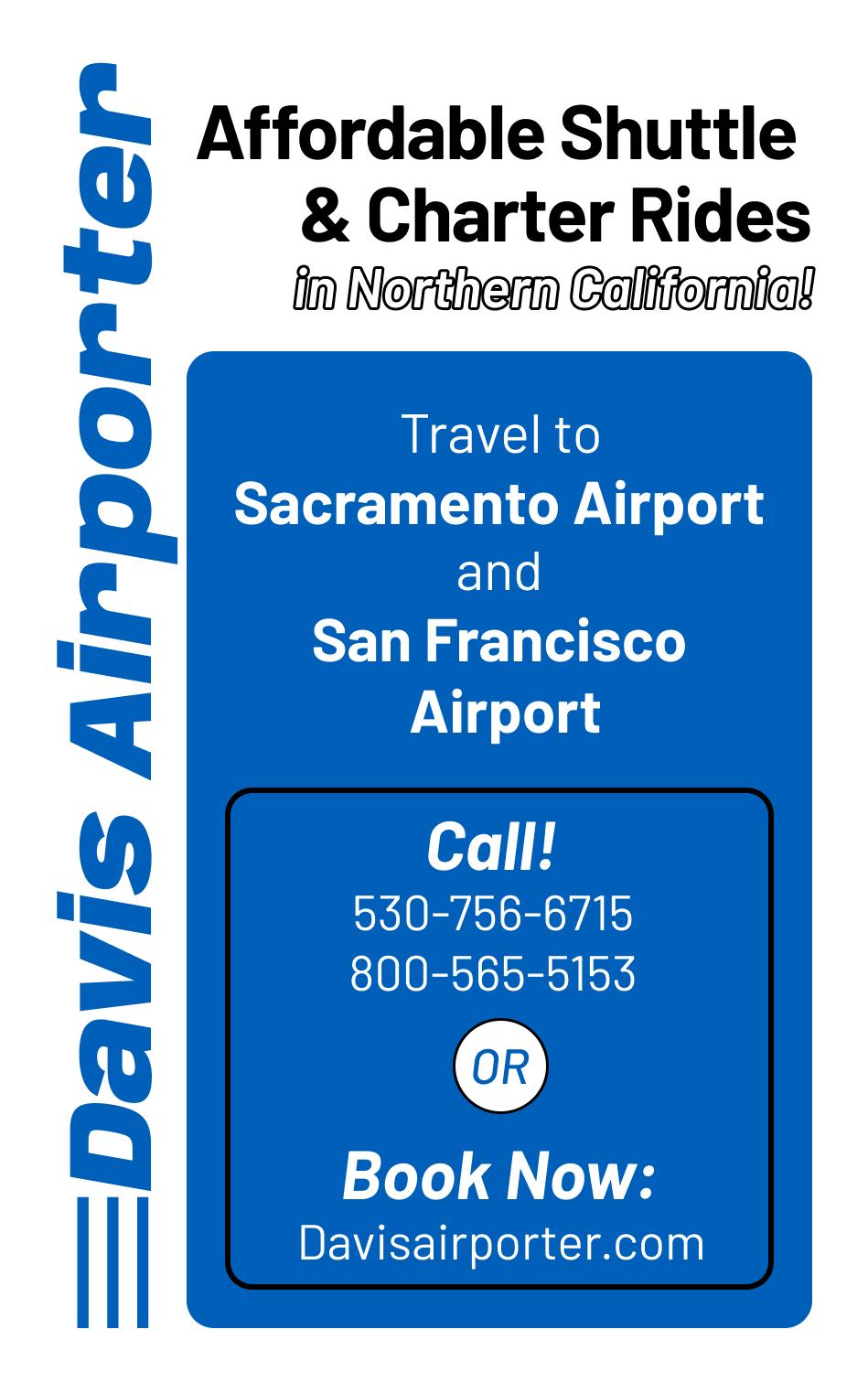
“Snakeskins are a promising bioinspiration,” Martínez said. “Their belly scales have evolved in such a way that it reduces friction as it moves ahead and increases friction if moved in the opposite direction. Their ventral [belly] skin helps them to move more efficiently through soil and slide up a tree without sliding down.”
This natural phenomenon is called frictional anisotropy, and it allows snakes’ to experience a change in surface friction depending on the surfaces they interact with.
Martínez believes that the snakeskin surface can help improve the strength and efficiency of geotechnical structures like driven piles, which are rigid columns that form the foundations of large buildings, and the anchors of offshore structures and tunnels, because these structures require different levels
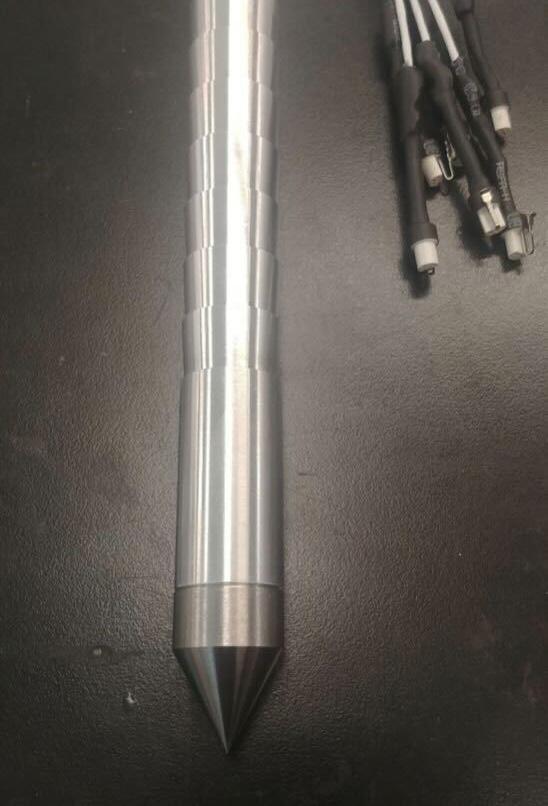
of friction. For example, low friction is required for installing driven piles while high friction is required for anchoring a pile.
Until now, it has been hard for researchers and engineers to create structures that are both easy to install and difficult to remove — as they need to serve as strong anchors — especially on dense soil.
“Installing driven piles is a challenge in the field, especially on denser soils,” Martínez said. “Imagine a pile that’s easy to install and yet strong enough to support the applied loads. We think snakeskin’s frictional properties will reduce the difficulty of establishing driven piles in more difficult terrain.”
Martínez explained that using a bioengineered snakeskin structure would allow piles to be installed more firmly and anchor the foundation more securely to the ground.
Additionally, Martínez said that determining the snake species that has the best skin to use for the geotechnical structures was difficult. To do so, he and his team collaborated with Brian Todd, Ph.D., who is a coauthor on the study and a professor in the UC Davis Department of Wildlife, Fish and Conservation Biology. Todd suggested certain species to examine, and the team eventually selected the western hognose snake, parrot snake and Saharan horned viper as potential candidates.
“One of the important parts of our bioinspired geotechnical work is learning about biology,” Todd said. “As a biologist, I helped Martínez’s team better understand the relationship between the topography and snakeskin of interest so they could tackle and
maintain the friction in the process of locomotion in these large structures.”
Using the three snake species above, the team developed a geometric design for each of their ventral skins in the lab to test and understand how they behaved on different surfaces.
“With the snakeskin scans, we realized that many of them had an asymmetrical sawtooth pattern,” Martínez said. “With the threedimensional printed surfaces, we then applied the snakeskin patterns onto structure surfaces, which would make them stronger than the typical material surfaces used, like concrete or steel. From this, we learned that we could make directionally-dependent, stronger surfaces.”
They created model driven piles with snakeskin-inspired materials and conducted various tests on them using the large geotechnical centrifuge at the UC Davis Center for Geotechnical Modeling. These tests helped Martínez’s team understand the behavior of the pile when put in the soil and how its application reduced or increased friction.
The study concluded that the snakeskin surface produced a lower friction when the pile was being installed but a higher friction during pullout. This means that the use of bioengineered snakeskin could allow for easier installation of piles and make them more resistant to being uprooted once they are in the ground. Martínez believes that this invention, and similar research into other bioinspired, geotechnical tools is promising for increasing the efficiency and strength of these structures in future construction.
CLIMATE MODELS CAN MORE
SIMULATE ATMOSPHERIC CONDITIONS BY INCLUDING VAPOR BUOYANCY
BY LILLY ACKERMAN science@theaggie.org
A recent study from researchers in the UC Davis Department of Land, Air and Water Resources has determined that the lightness of water vapor in the atmosphere has significant impacts on clouds and temperature, and should not be overlooked in climate modeling.

Climate models are an important tool for simulating atmospheric conditions that help predict trends in climate change. However, not all climate models include the same variables in their equations.
Seth Seidel, a co-author of the study and a Ph.D. student in the Atmospheric Science Graduate Group at UC Davis, explained vapor buoyancy, a variable that was the focus of the study.
“Vapor buoyancy derives from the fact that the molecular weight of water vapor is a little bit less than that of dry air,” Seidel said. “So if you take air that’s otherwise dry, and you mix in some water vapor molecules […] it’s going to be less dense. It’s going to be lighter
and more buoyant.”
This means that more humid areas of the atmosphere exhibit slightly lower air density than drier areas. According to Siedel, leading up to this study, some major climate models choose not to include vapor buoyancy as a variable in their governing equations because of its minimal effects on air density.
“Buoyancy governs vertical motions [in the atmosphere] and is thus among the most fundamental quantities in understanding atmospheric circulations, clouds and climate,” the study reads.
“However, water vapor is a trace gas in Earth’s atmosphere, so [vapor buoyancy] has traditionally been considered small and often neglected in studies of climate dynamics.”
By using reanalysis data and atmospheric models, the authors determined that vapor buoyancy has effects beyond just small differences in air density. It also increases the atmospheric temperature in the tropical
troposphere, the lowest layer of the atmosphere, and increases the low cloud fraction, or the amount of low cloud cover, in the subtropics.
“Both quantities [temperature and low cloud fraction] affect Earth’s energy balance and climate,” the study reads. “These biases may amplify with [global] warming due to increasing water vapor and then contribute to uncertainties in predicting future climate change.”
An increase in the amount of low cloud cover is a particularly crucial effect of vapor buoyancy that can heavily influence other climate factors, including lowering temperatures. This is why failure to accurately simulate clouds can lead to a cascade of other inaccuracies that may make a model unreliable.
“Clouds play a critical role in Earth’s energy balance […] Therefore, faithfully modeling clouds is necessary to improve our climate projections,” Seidel said via email. “[Vapor buoyancy] increases
the amount of low clouds (‘low cloud fraction’), likely increasing their cooling effect on Earth’s surface.”
With this discovery of vapor buoyancy’s importance in climate modeling, the authors show that models that include vapor buoyancy may be more accurate and that those that do not should consider doing so to more accurately predict climate change trends.
Additionally, the study found that rising air in the tropics is colder
than the surrounding air because of vapor buoyancy’s warming effects on the tropical atmosphere. This is an exception to the fact that warm air rises and speaks to the significance of vapor buoyancy’s effects on the atmosphere.
“We hope to build a body of evidence to help persuade the modeling community to include this in their models,” Seidel said. “What this hopefully will give us is a more physically faithful set of climate models in the future.”
THE CALIFORNIA AGGIE THURSDAY, NOVEMBER 17, 2022 | 11
ACCURATELY
Researchers at UC Davis determine that the lightness of water vapor should not be excluded from cli
Picture of a bioengineered pile with snakeskin material on the surface. (Alejandro Martinez, Ph.D. / Aggie )
SCIENCE AND TECH
MIRANDA LEE / AGGIE
SPORTS
The fresh Aggies’ squad starts the season 2-0
BY GABRIEL CARABALLO sports@theaggie.org
The UC Davis men’s basketball team made history on Nov. 7, beating UC Berkeley for the first time in program history 75-65. The team has previously had a 0-33 record against the Bears. The historic win was made possible by fourth-year forward Christian Anigwe who led the game with 21 points and newly-acquired transfer student, second-year guard Ty Johnson, who contributed 17 points.
“[It was a] big time win against a PAC-12 school, but honestly, we felt confident going into that game, thinking we could beat them,” Johnson said “We go into every game like that.”
UC Davis head coach Jim Les also reacted to the historic upset.
“I was really proud of the guys and how they played in that [Cal Berkeley] game, and we were riding that high into this game,” Les said.
The momentum Les described carried over to the Aggies’ second game of the season against the Cal Maritime Keelhaulers. The game began with Ty Johnson expeditiously scoring a midrange shot and three-point shot off of a Keelhauler turnover to give the Aggies an early 5-0 lead.
With solid defense and consistent outside scoring from fourth-year guard Braxton Adderly, the Keelhaulers stayed within striking distance for most of the first half. Adderly kept Maritime going offensively with 12 first-half points making ⅔ from behind the threepoint line.
“We’re pleased to see Braxton knock down a couple shots. He really helps our team stretch the floor,” Cal Maritime Head Coach Tim Bross said in regards to Adderly’s shooting night.
Adderly’s second three-pointer of the first half gave the Keelhaulers a 24-23 lead with six and a half minutes left in the second quarter, but, in those remaining minutes, UC Davis would go on an incredible 15-point run.
The score was 38-26 in favor of the Aggies with only a minute left in the half. With the clock winding down, UC Davis’ second-year guard Leo DeBruhl made a long three pointer with
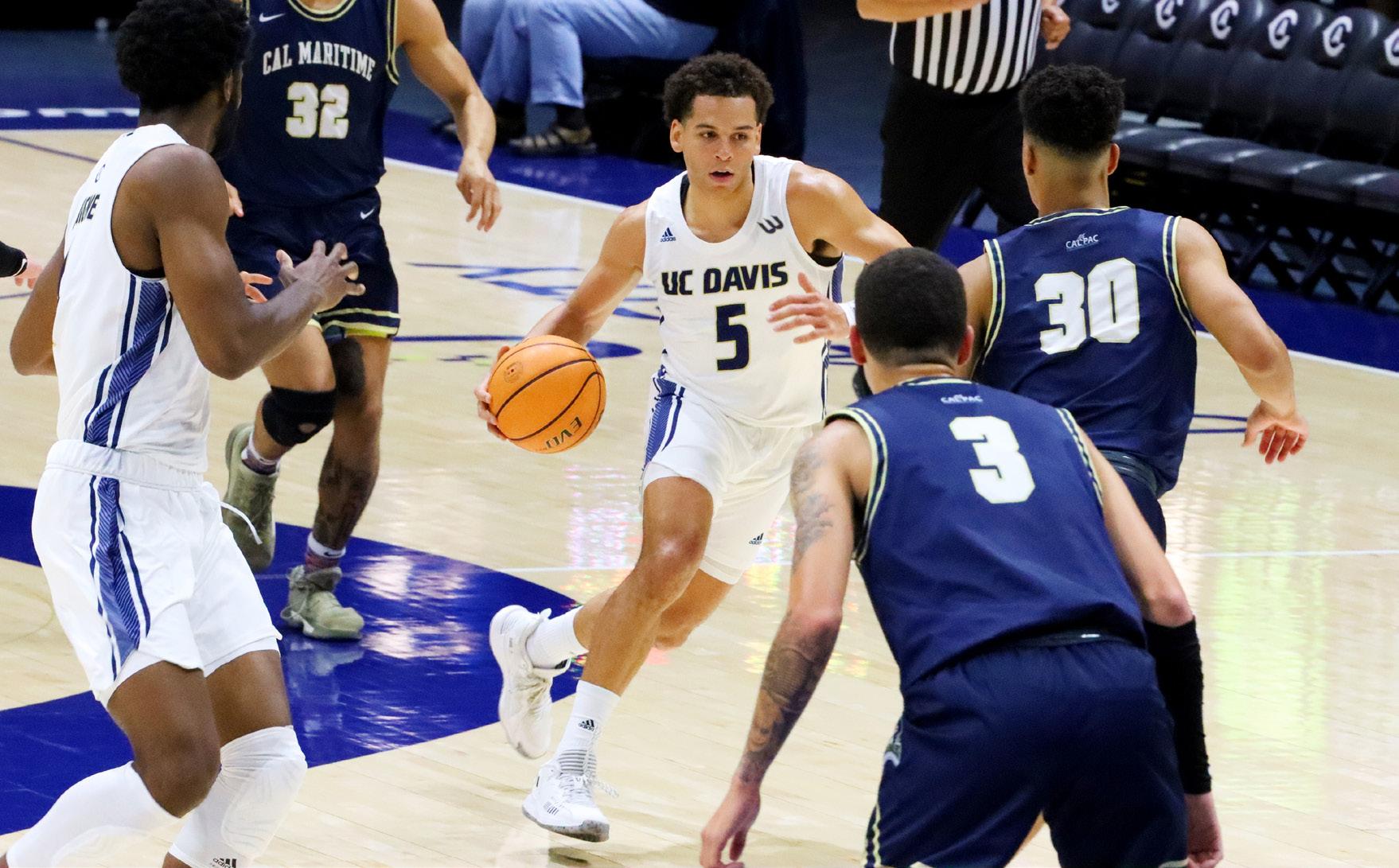
20 seconds left on the clock; DeBruhl patiently waited until the two-second tick to release the final shot of the half. A statement shot put the Aggies up 43-26 along with a 20-2 point run. A fourth of those points came from Ty Johnson, who ended the half with 16 total points.
The second half started and the Keelhaulers were looking to gain some momentum with an exciting play.
Fourth-year forward Miles Pennington drove to the basket to deliver an emphatic slam dunk but his attempt was blocked by Aggie forward Anigwe.
After the block, UC Davis would go on a seven-point run to start the second half, setting the tone for the rest of the game.
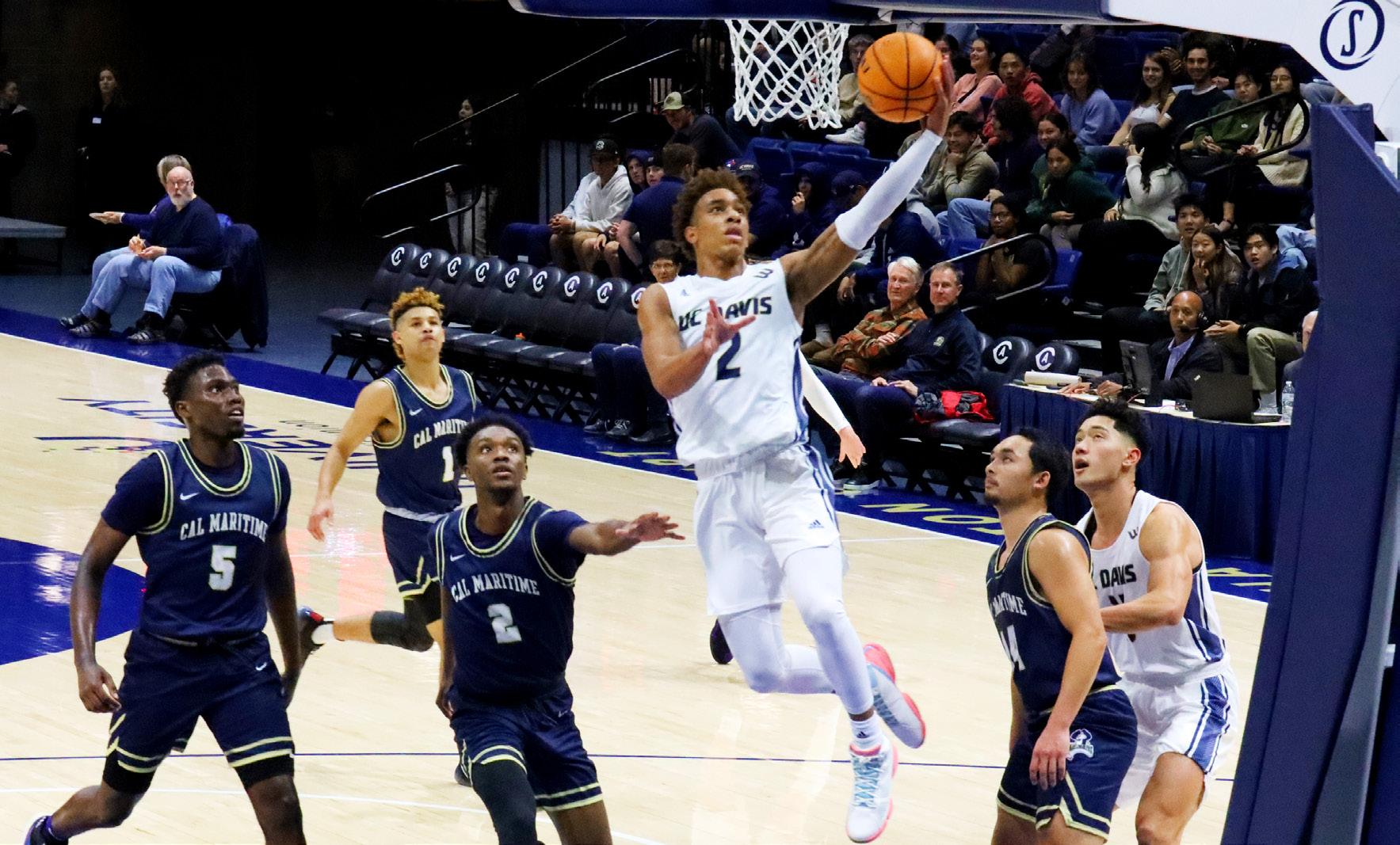
First-year forward Jac Mani, along with third-year guard Kane Milling and third-year forward Sam Manu, took over in the second half for the Aggies, totaling 27 points. In his first game at the collegiate level, Mani played with confidence, banking a three-pointer and a few hook shots inside the key.
Typically, first-year players don’t get a lot of minutes on the floor, and if they do, they don’t produce much, as it takes time to get used to playing Division One basketball at the college level. However, Mani seemed to play like a veteran, scoring with ease.
The Aggies defeated the Keelhaulers 90-67. Cal Maritime shot 39% from the field and 56.3% from three-point range.
Adderly gave a notable performance, leading the team in points with 16 and five rebounds.
“We came here to win a basketball game, it didn’t work out that way, but I feel really strongly that we grew tonight, and there were some bright spots,” Bross said.
UC Davis shot 49.3% from the field and 33.3% from the three-point range in the game. The Aggies had notable performances from Anigwe and Milling, who each had 13 points. Firstyear forward Mani put up 11 points in 17 minutes and second-year guard Robby Beasly led the game in rebounds with nine. Overall, UC Davis had an impressive number of contributors to the win.
Ty Johnson helps lead the way for the Aggies win against Cal Maritime in their first home basketball game of the season. (Claire Diepenbrock / Aggie)

LOS ANGELES FOOTBALL CLUB CROWNED MAJOR LEAGUE SOCCER CUP CHAMPIONS
In what has been dubbed the ‘greatest game in MLS history,’ the match showed just how much professional soccer has grown in the U.S.
BY MARLON ROLON sports@theaggie.org
The game featured a game-saving goal in the waning minutes of stoppage time and an unlikely hero in penalty kicks that helped LAFC win its first MLS Cup.
“For 10 minutes or 15 minutes, [it] was like a Halloween movie,” said LAFC’s striker Carlos Vela regarding the drama that ensued in the final minutes of overtime.
“And then we finished with a Hollywood movie, like [we’re] dreaming things, like something you can’t imagine happen[ing], it happened.”
The star-studded event featured Hollywood’s brightest stars; Will Ferrell, Magic Johnson and Justin and Haily Bieber were in attendance to support LA’s team.
Midfielder Kellyn Acosta was the first to score, giving LAFC the lead in the 28th minute of the first half after deflecting a free kick. At this point in the match, LAFC appeared to be in control, relishing the home-field advantage at the Banc.
However, it didn’t take long for Philadelphia to level the game, with Daniel Gazdag scoring for the Philadelphia Union in the 59th minute of the second half.
The remainder of regular play was a back-and-forth between the two teams, reminding spectators of the groups’ — who were both the No. 1 seed in their respective conferences — dominance throughout the season.
With the clock winding down in the 83rd minute, LAFC defender Jesus Murillo scored on a header, giving the home team the lead once more. With
Los Angeles FC players celebrate with the Philip F. Anschutz Trophy after defeating the Philadelphia Union in the 2022 MLS Cup championship game at Banc of California Stadium on November 5th. (Jayne Kamin-Oncea-USA
six minutes left in regulation play, LAFC appeared to be on the cusp of lifting the trophy — but the game was not quite over.
Philadelphia roared back the following minute with a header from defender Jack Elliott, tying the score 2-2 and sending the game to overtime.
“It’s a classic final; a lot of finals throughout many competitions around the world are decided by set plays and those moments where mistakes are made, not so much of the run and play, and I think we saw more of that tonight,” LAFC Head Coach Steve Cherundolo said of the match.
The biggest mistake of the match came in the 109th minute, during stoppage time, when LAFC’s Murillo miscalculated a back pass intended for goalkeeper Maxime Crepeau. That mistake resulted in not only a red card but also a right-leg fracture for Crepeau as he collided with Union striker Cory Burke during a one-on-one breakaway. Crepeau had to be carted off the field,
LAFC was down to 10 men as substitute goalkeeper John McCarthy was forced to come into the match without warming up. McCarthy had only made one appearance in the regular season in a 2-0 loss back in May.
LIFT-OFF: HOUSTON ASTROS WIN WORLD SERIES FOR FIRST TIME SINCE 2017
The Houston Astros win the World Series against the Philadelphia Phillies in six games
BY PATRICK FIGUEROA sports@theaggie.org
 On Nov. 5, the Houston Astros defeated the Philadelphia Phillies in game six of the World Series. This marks the Astros’ first World Series win since 2017, a title that was more so marked by a cheating scandal rather than the championship itself. However, with this championship and prolonged seasonal success since 2017, the Astros have fought to prove that their 2017 championship was not just the result of their cheating scandal. In fact, the 2022 World Series will go down as one to remember.
On Nov. 5, the Houston Astros defeated the Philadelphia Phillies in game six of the World Series. This marks the Astros’ first World Series win since 2017, a title that was more so marked by a cheating scandal rather than the championship itself. However, with this championship and prolonged seasonal success since 2017, the Astros have fought to prove that their 2017 championship was not just the result of their cheating scandal. In fact, the 2022 World Series will go down as one to remember.
Game one: The Phillies come back from behind to take a 1-0 series lead The 2022 World Series started off with a comeback in which the Phillies won after being down 5-0 after three innings. The Astros’ starting pitcher Justin Verlander, who gave up five runs early on, raised his World Series’ earned run average (ERA) to 6.07, the worst ERA in World Series history among starting pitchers with at least five starts. The Phillies evened the score, however, with five runs in the fourth and fifth innings combined to tie up the game at
5-5. Scoring then ceased until Phillies’ catcher J.T. Realmuto hit a go-ahead home run in the top of the 10th inning. Phillies’ relief pitcher David Robertson secured the 6-5 victory in the bottom of the 10th inning.
Game two: Astros win 5-2 to tie series at 1-1
The Astros evened the series with a 5-2 win that featured an impressive pitching performance from their starting pitcher, Framber Valdez. Valdez pitched over six innings, allowing just one run and four hits, and striking out nine batters. The Astros’ offense struck early with a three-run first inning, featuring RBIs from Astros’ shortstop Jeremy Peña and outfielder Yordan Alvarez. Astros’ third baseman Alex Bregman hit a two-run home run in the fifth inning to extend the Astros’ lead to 5-0. The Phillies would not get shut out, as they scored a run in each of the seventh and ninth innings, but it was not enough to come back. READ MORE AT THEAGGIE.ORG
LAFC’s Gareth Bale scored in the 128th minute of play, evening the score once more with just one minute left in stoppage time.
MLSCUP on 8
12 | THURSDAY, NOVEMBER 17, 2022 THE CALIFORNIA AGGIE
UC DAVIS MEN’S BASKETBALL CRUISES PAST CAL MARITIME IN HOME OPENER MEN’S BASKETBALL
Just 10 miles separate Hollywood from the Banc of California Stadium, which is home of the Los Angeles Football Club (LAFC). On Saturday, Nov. 5, arguably the greatest game in U.S. Major League Soccer (MLS) history took place between LAFC and Philadelphia Union. It was a thrilling game, so dramatic that it resembled something out of a Hollywood movie script.
Robby Beasley III prepares to drive down the sideline during one of the many successful plays Davis made against Cal Maritime. (Claire Diepenbrock / Aggie)
and
The Banc of California Stadium was silenced in the 123rd minute of stoppage time when Elliott scored a second goal for the Union. With LAFC down a player, Elliott’s late goal seemed to secure the MLS Cup win for Philadelphia. But LAFC didn’t give up.
The prior Real Madrid star signed to LAFC during summer 2022 on a oneyear contract. Surprisingly, Bale started in just two games and appeared in 12 for LAFC throughout the season as he dealt with a slew of injuries throughout the regular season.
CHRISTINA LIU / AGGIE
TODAY Sports / Courtesy)
UCDMBBVSCM on 8
SOCCER BASEBALL

 BY SYDNEY AMESTOY campus@theaggie.org
BY SYDNEY AMESTOY campus@theaggie.org






 BY MADELEINE YOUNG city@theaggie.org
BY MADELEINE YOUNG city@theaggie.org





 BY LILY FREEMAN campus@theaggie.org
BY LILY FREEMAN campus@theaggie.org








 WRITTEN BY THE EDITORIAL BOARD
WRITTEN BY THE EDITORIAL BOARD



 BY SARAH HAN arts@theaggie.org
BY SARAH HAN arts@theaggie.org




















 On Nov. 5, the Houston Astros defeated the Philadelphia Phillies in game six of the World Series. This marks the Astros’ first World Series win since 2017, a title that was more so marked by a cheating scandal rather than the championship itself. However, with this championship and prolonged seasonal success since 2017, the Astros have fought to prove that their 2017 championship was not just the result of their cheating scandal. In fact, the 2022 World Series will go down as one to remember.
On Nov. 5, the Houston Astros defeated the Philadelphia Phillies in game six of the World Series. This marks the Astros’ first World Series win since 2017, a title that was more so marked by a cheating scandal rather than the championship itself. However, with this championship and prolonged seasonal success since 2017, the Astros have fought to prove that their 2017 championship was not just the result of their cheating scandal. In fact, the 2022 World Series will go down as one to remember.